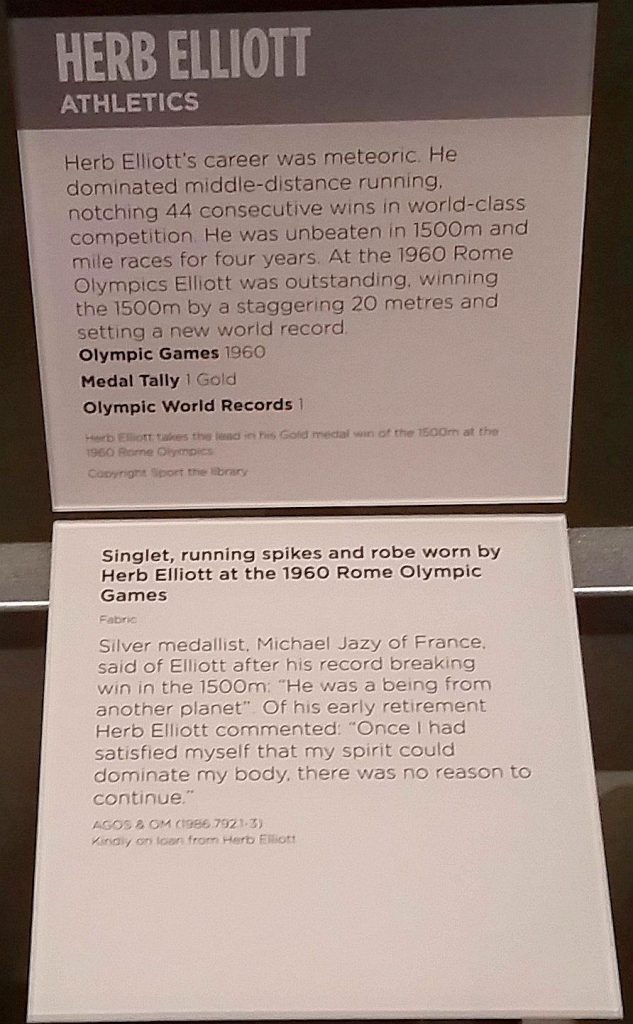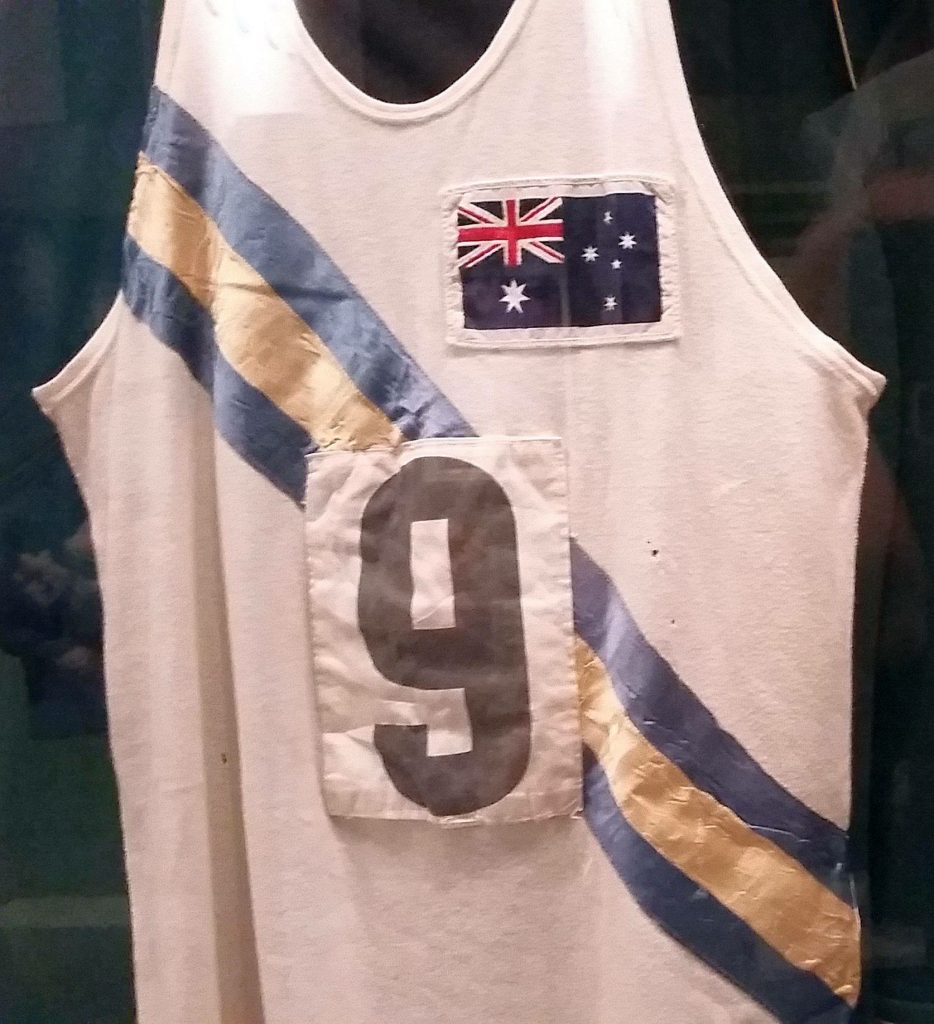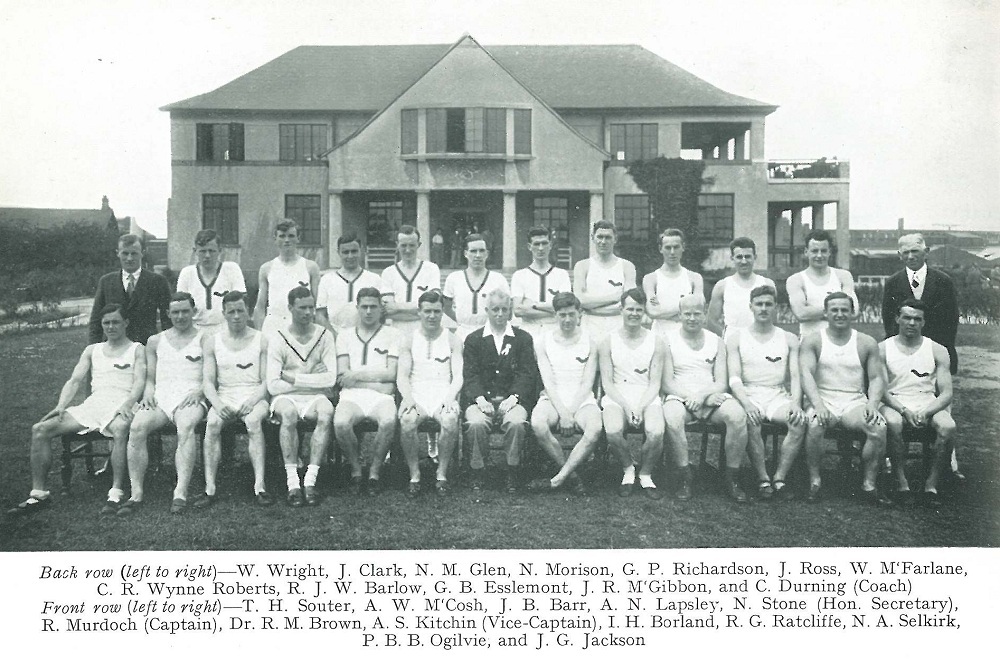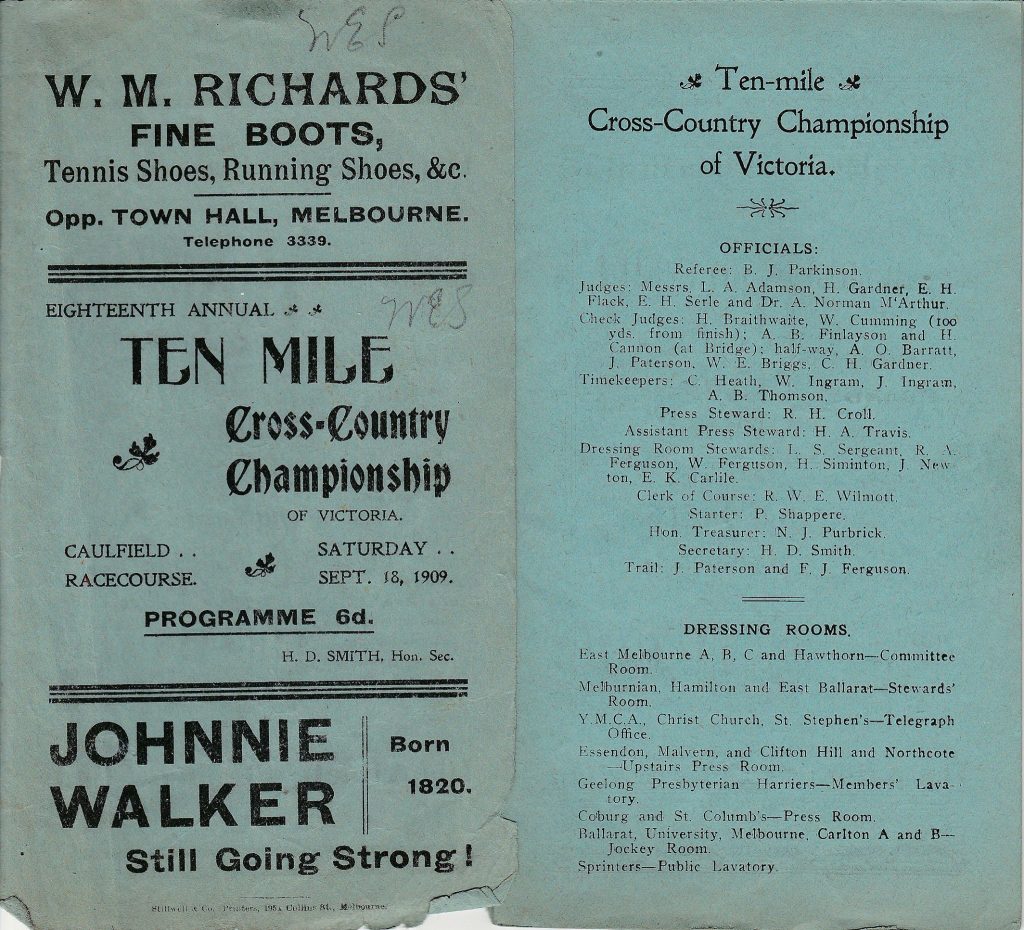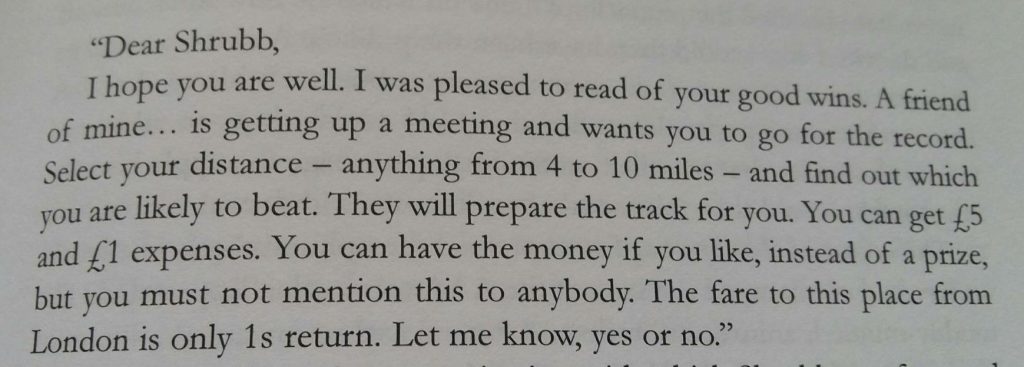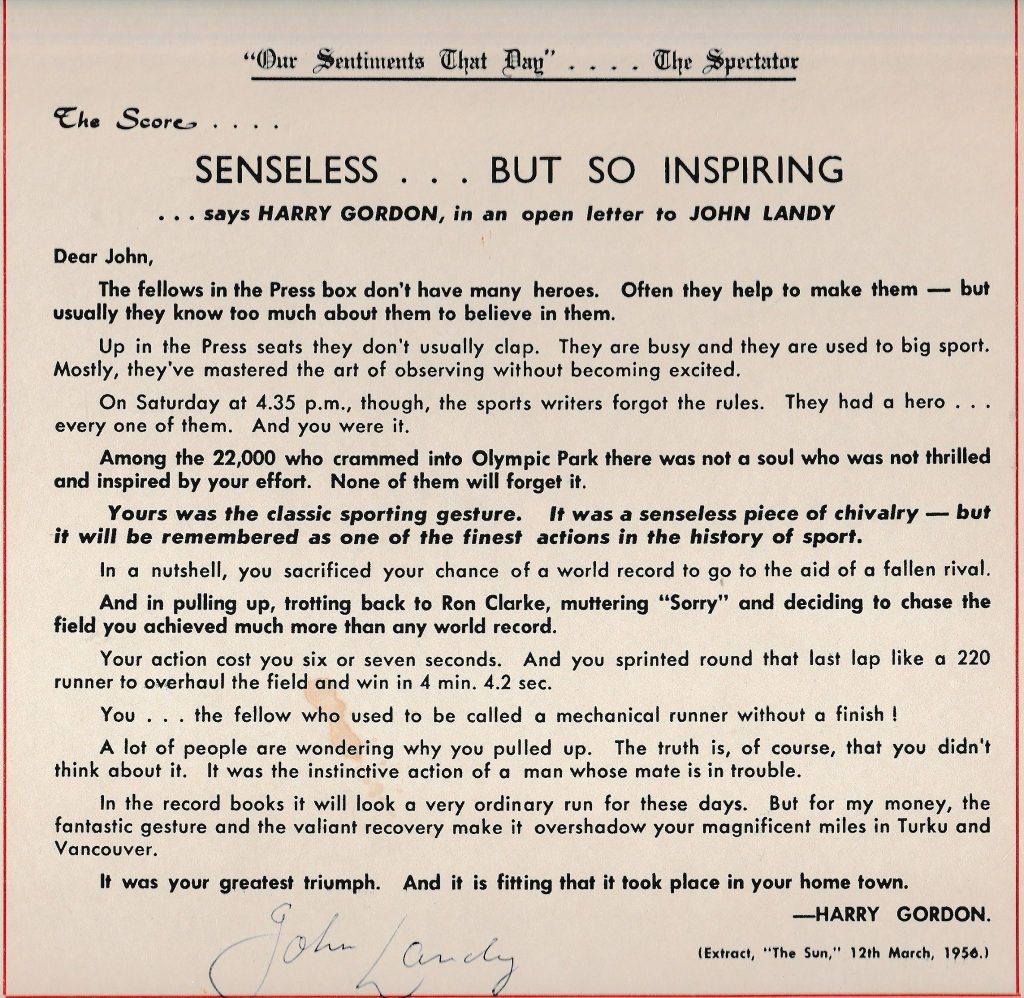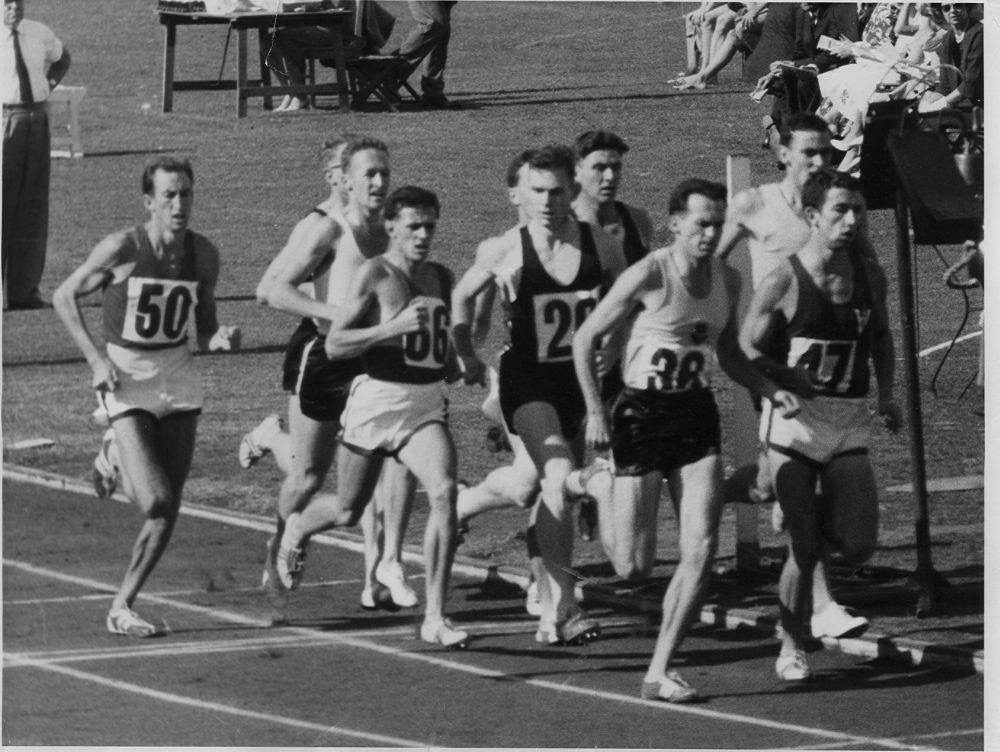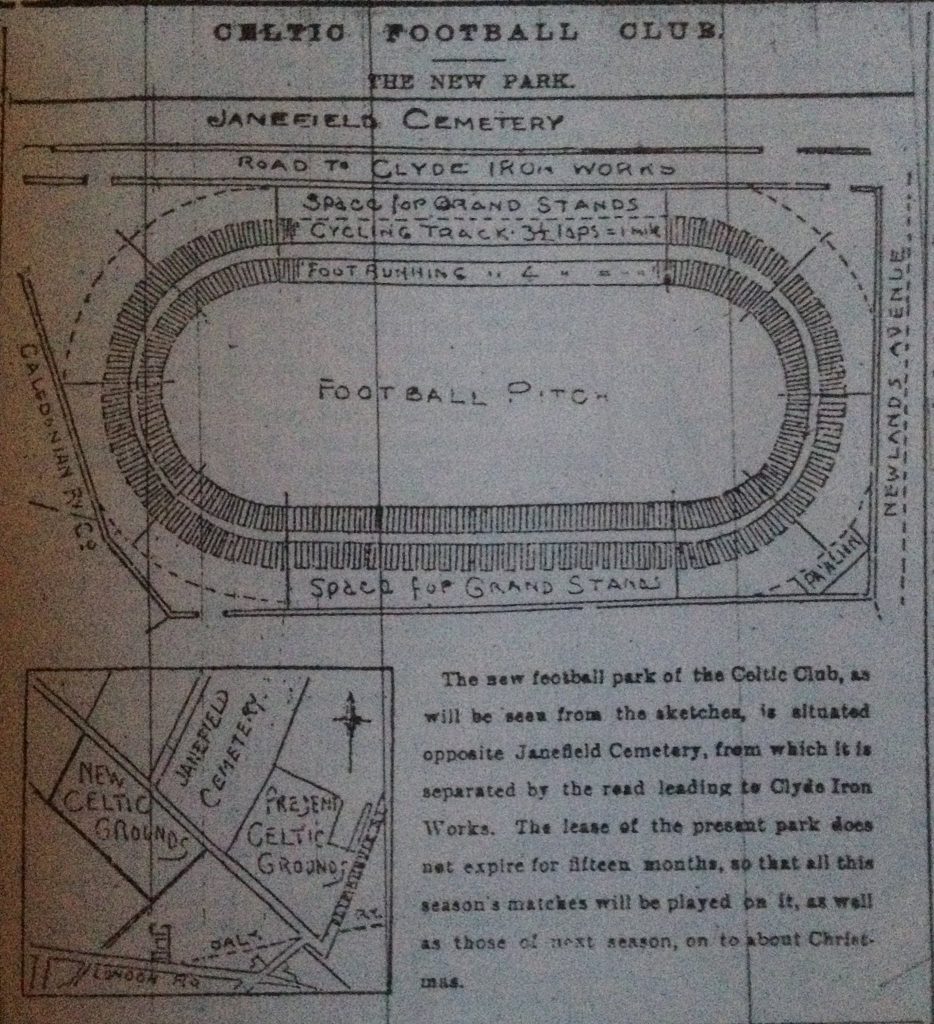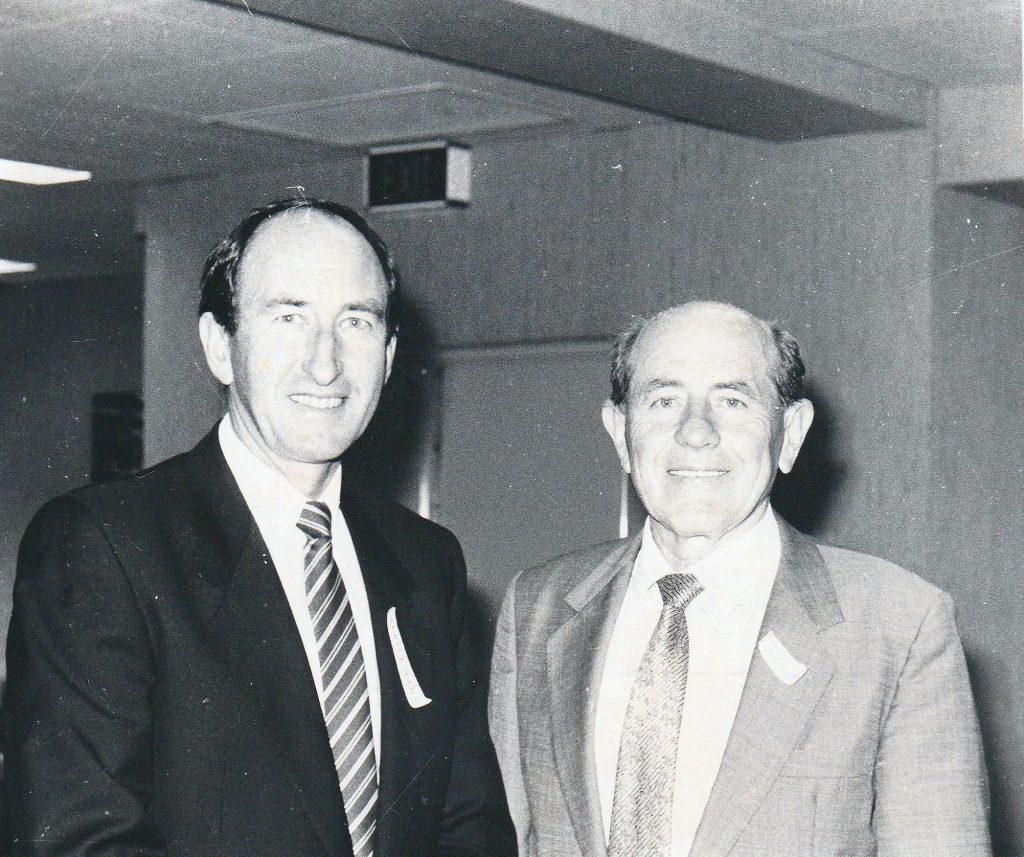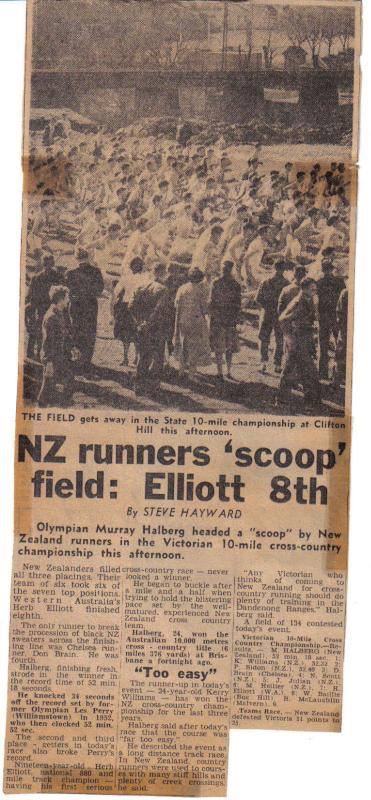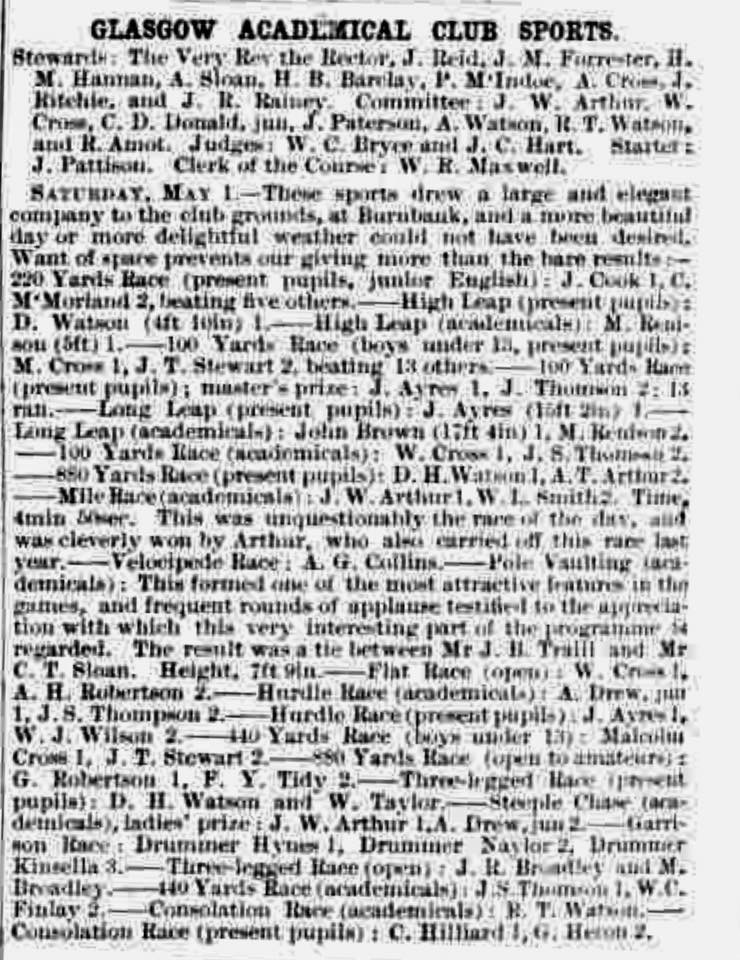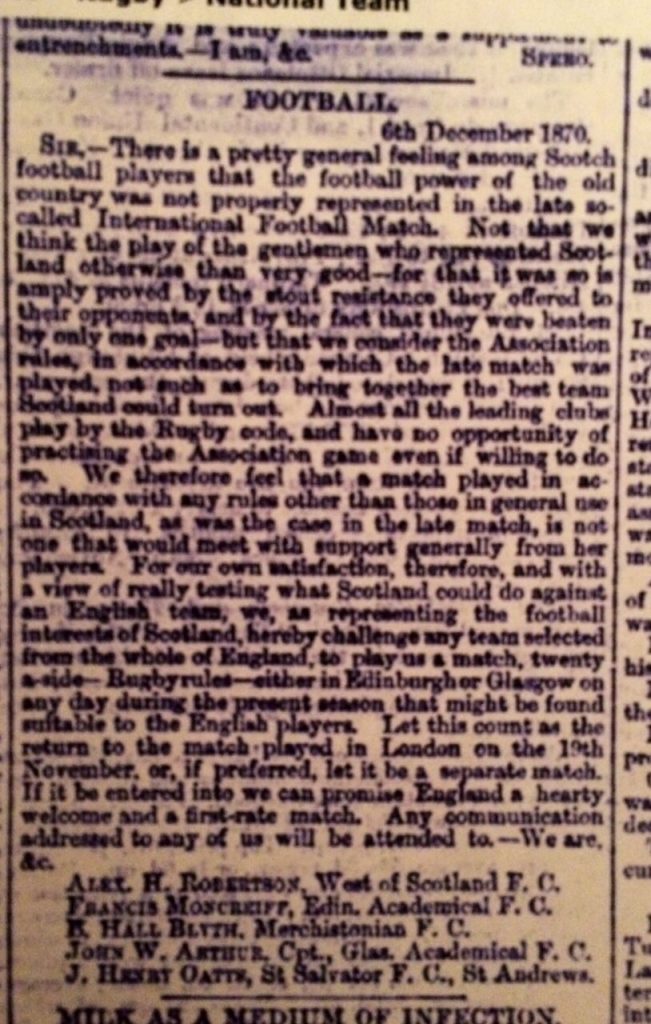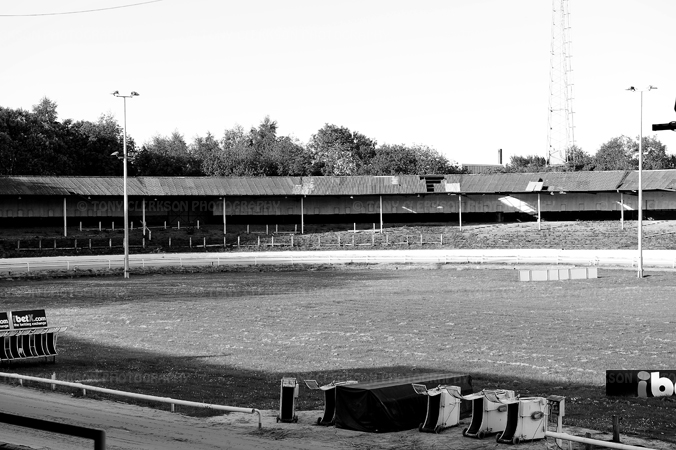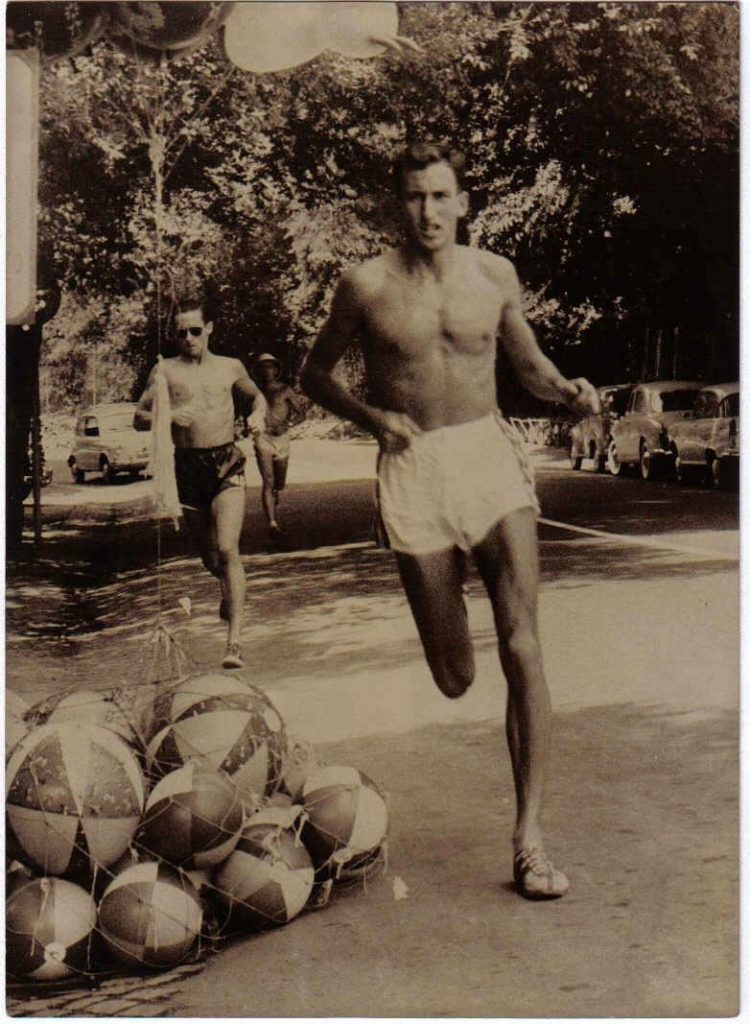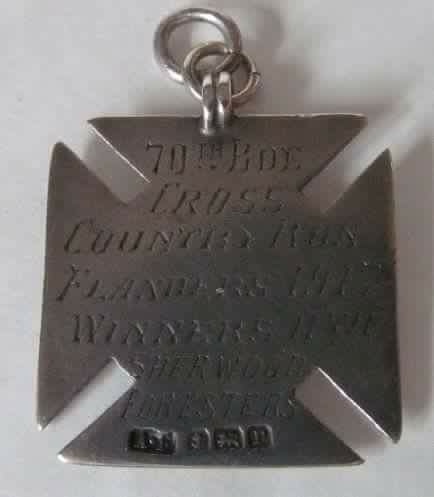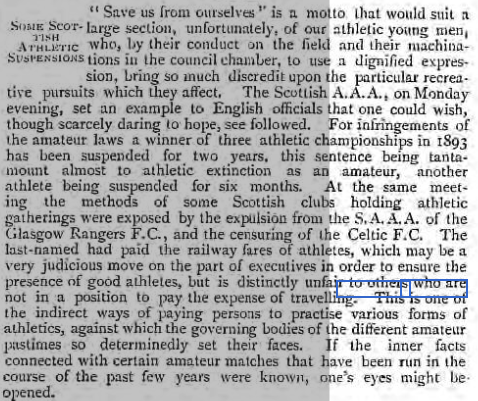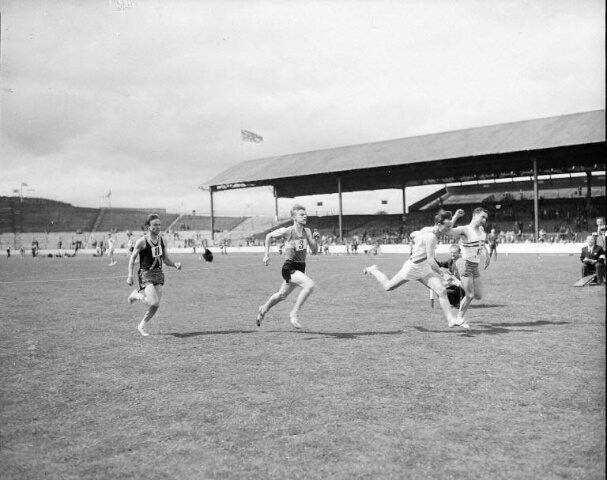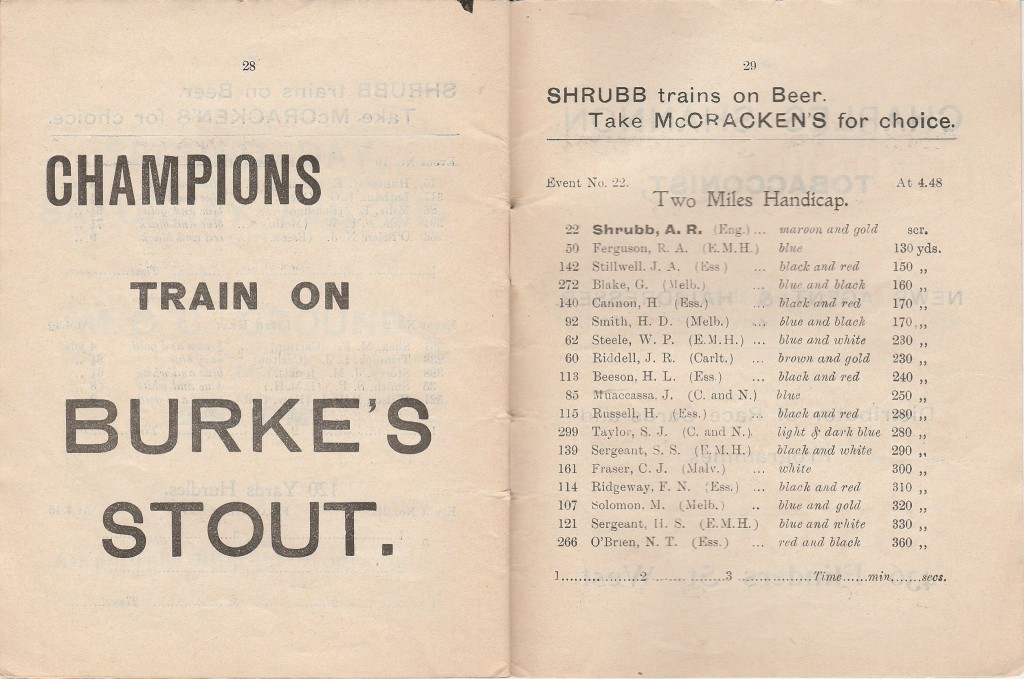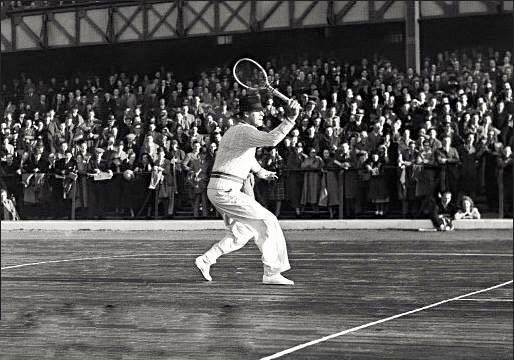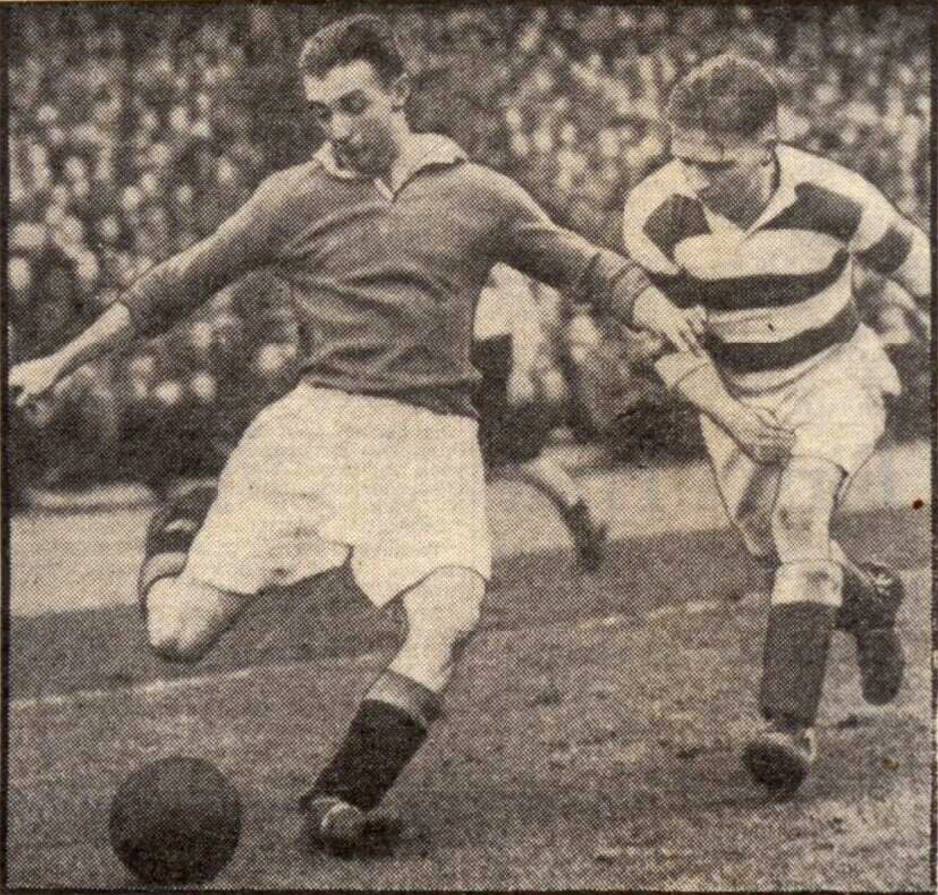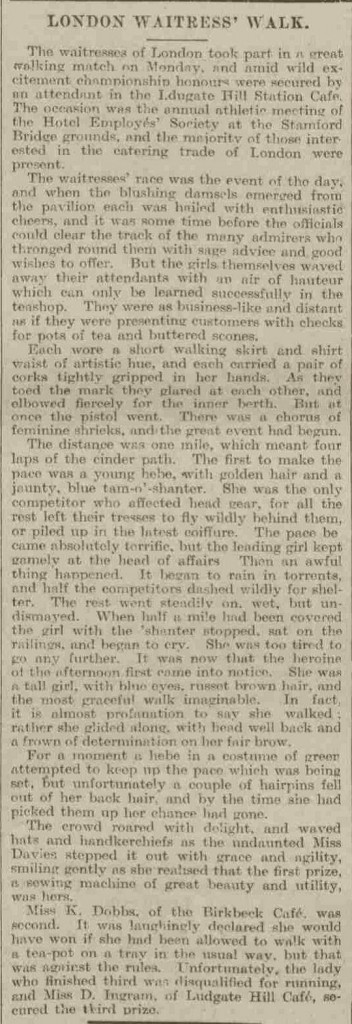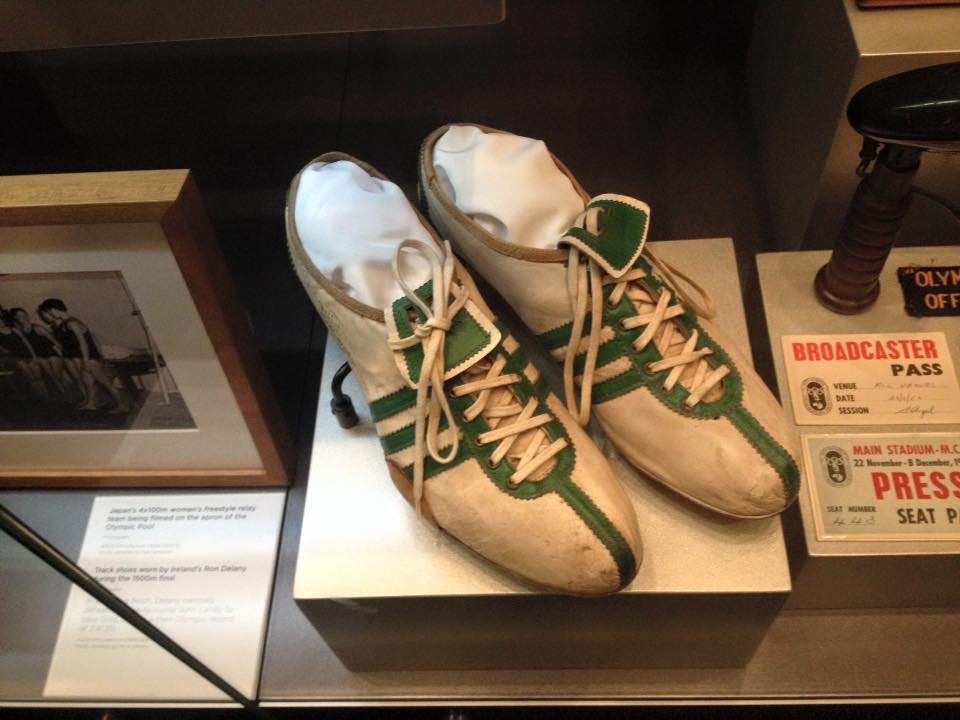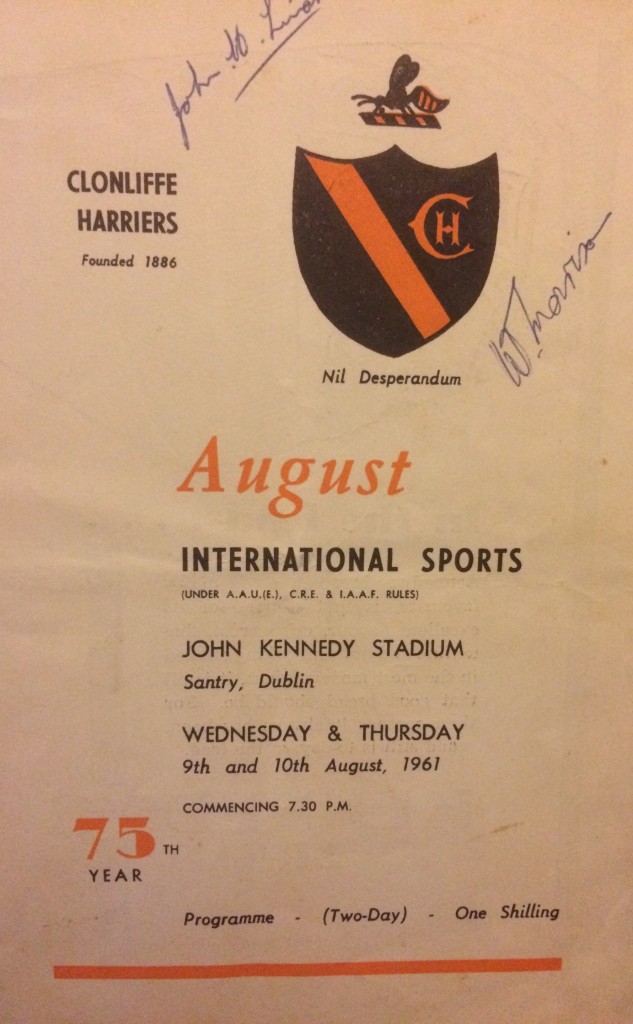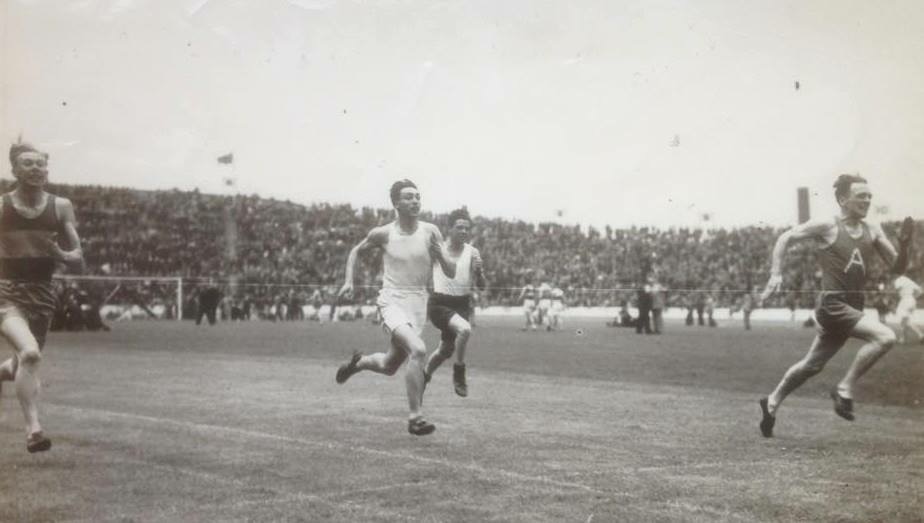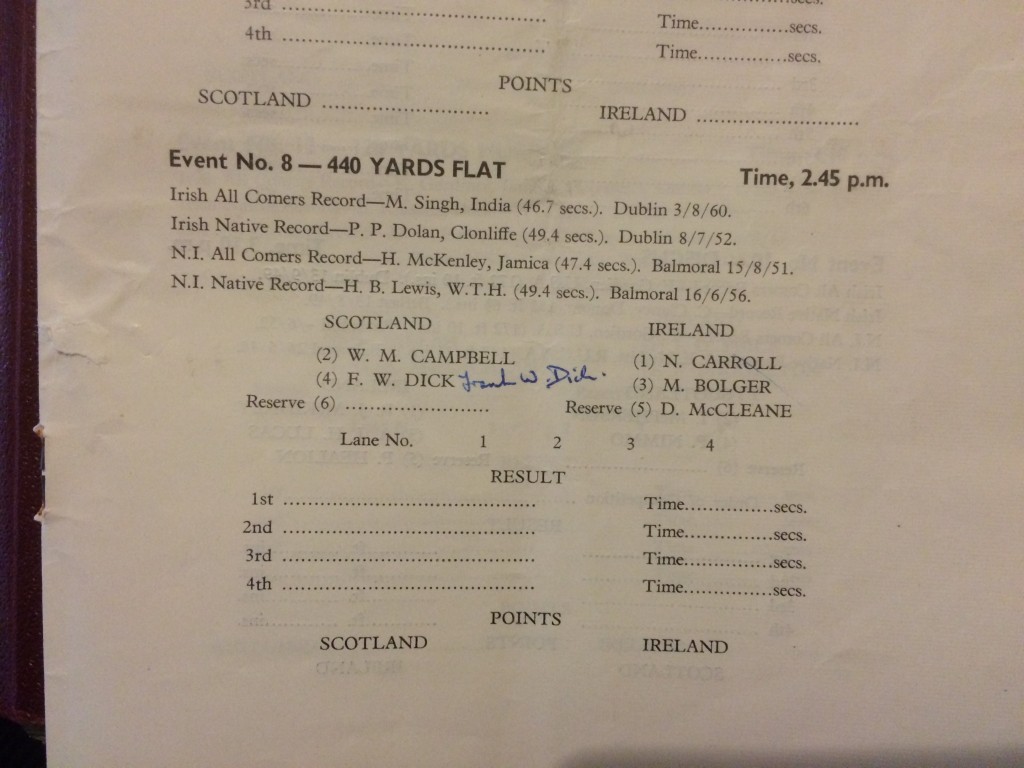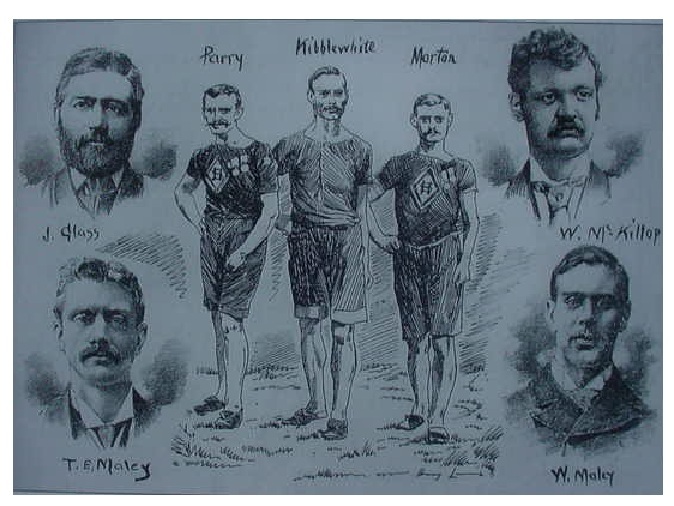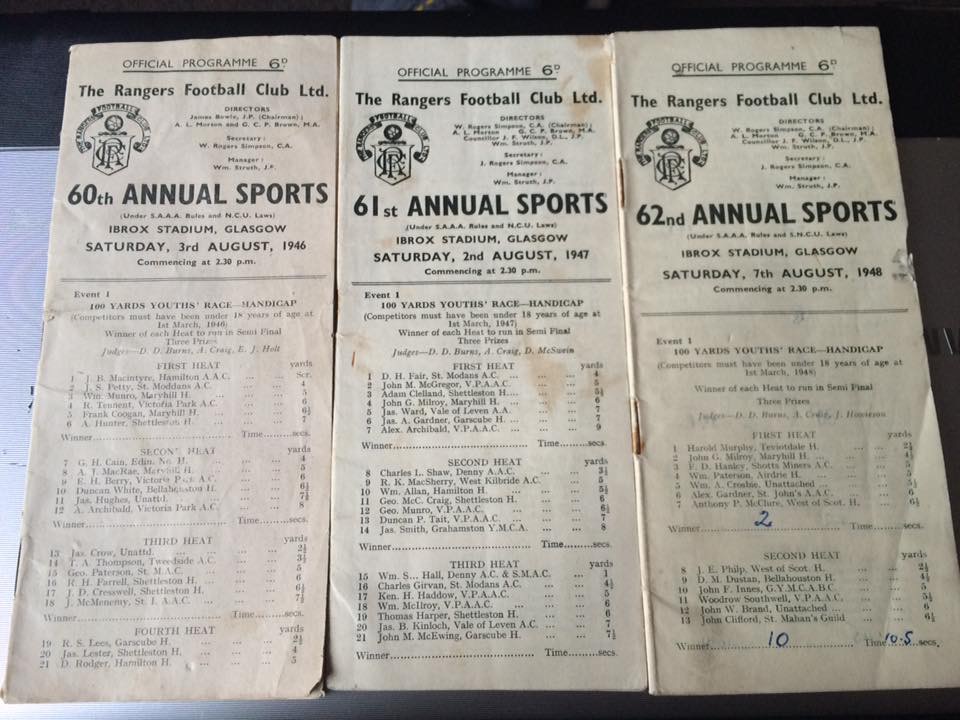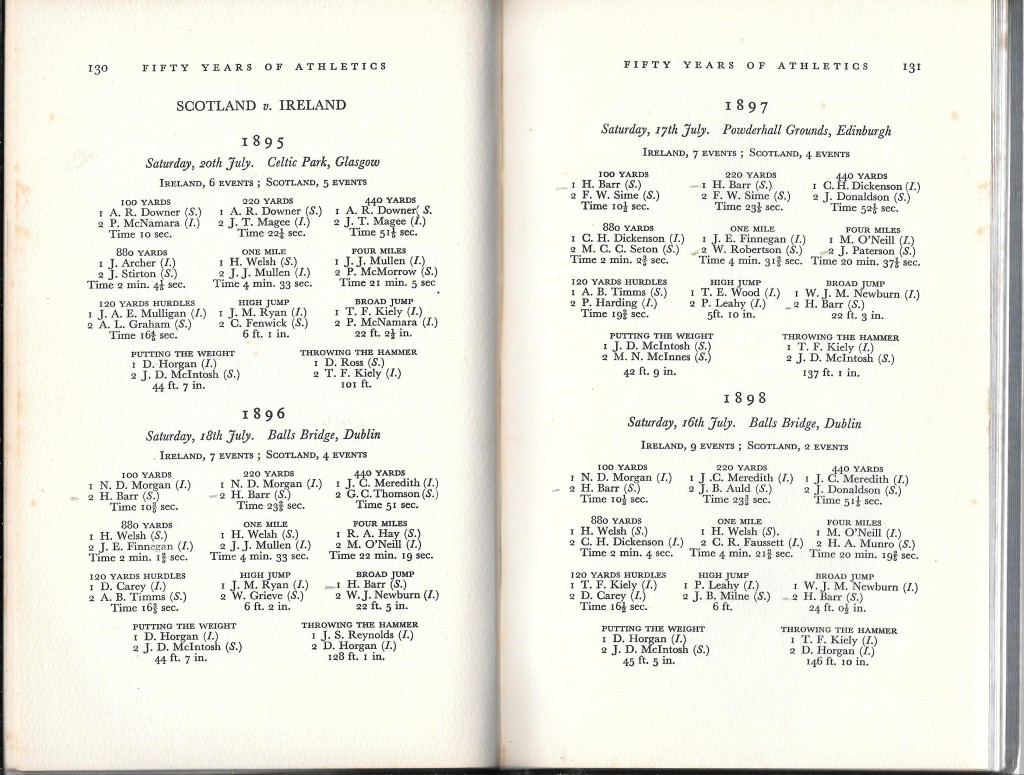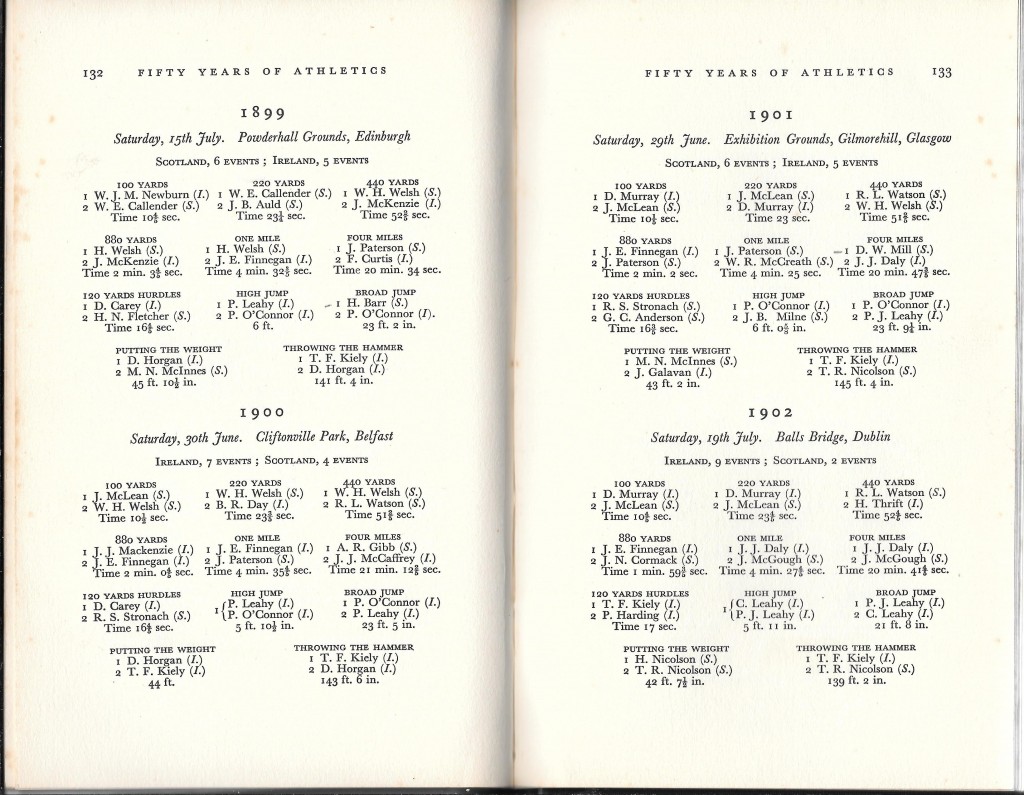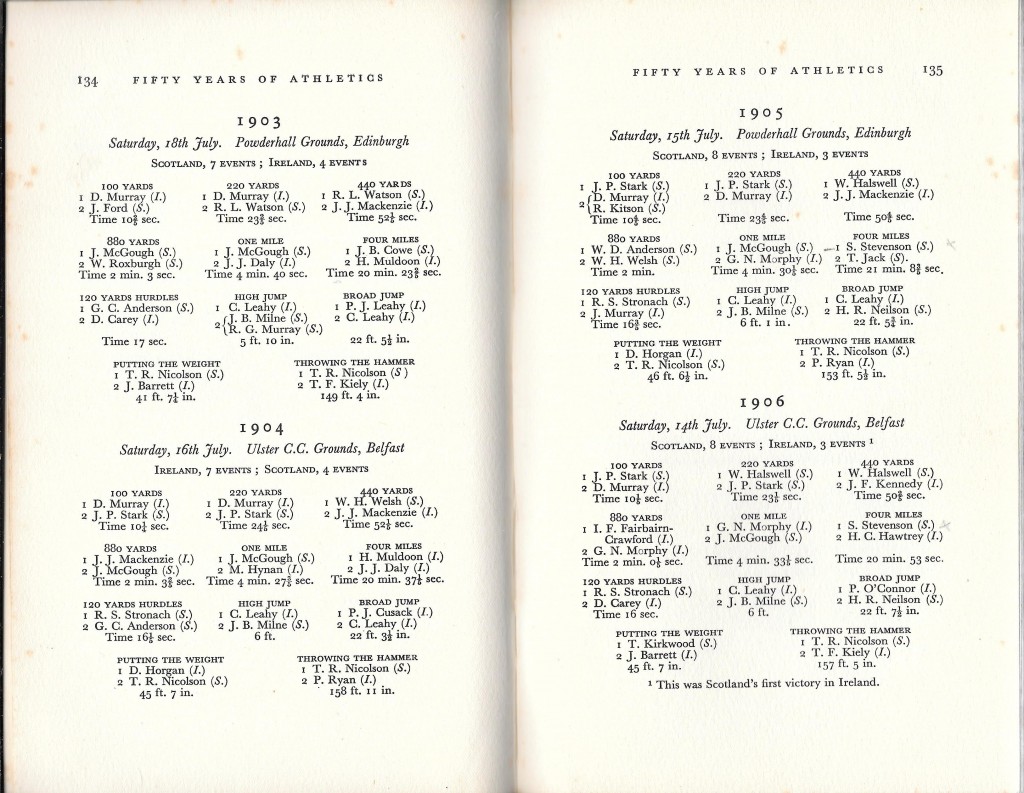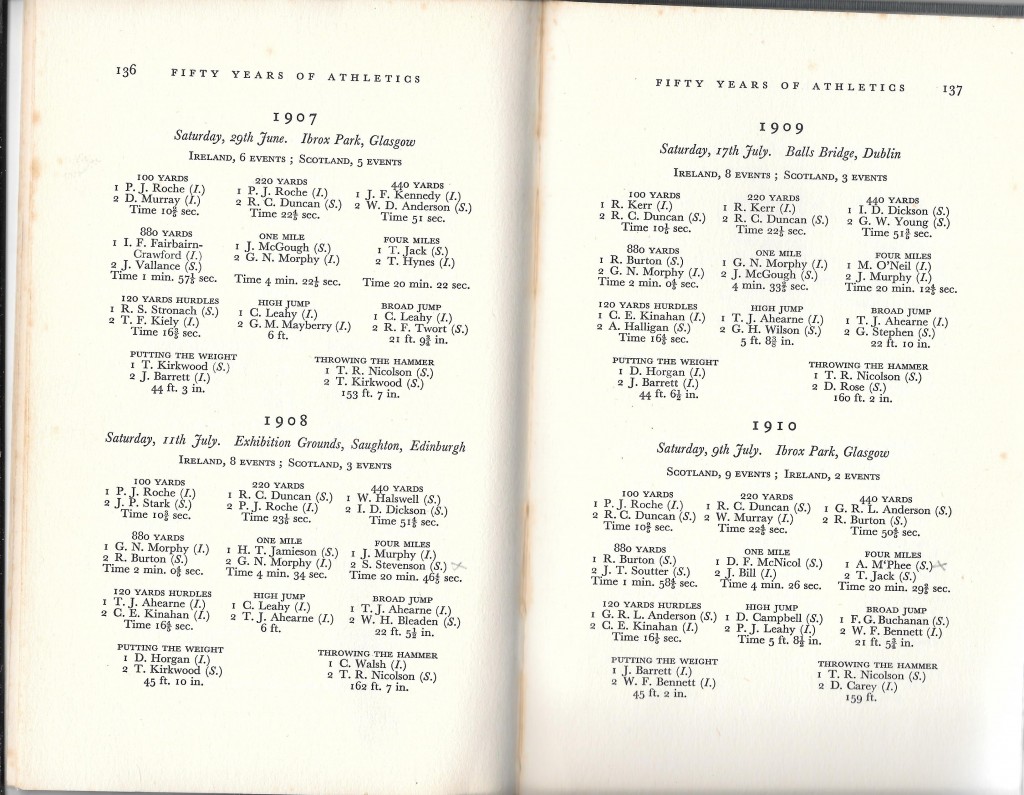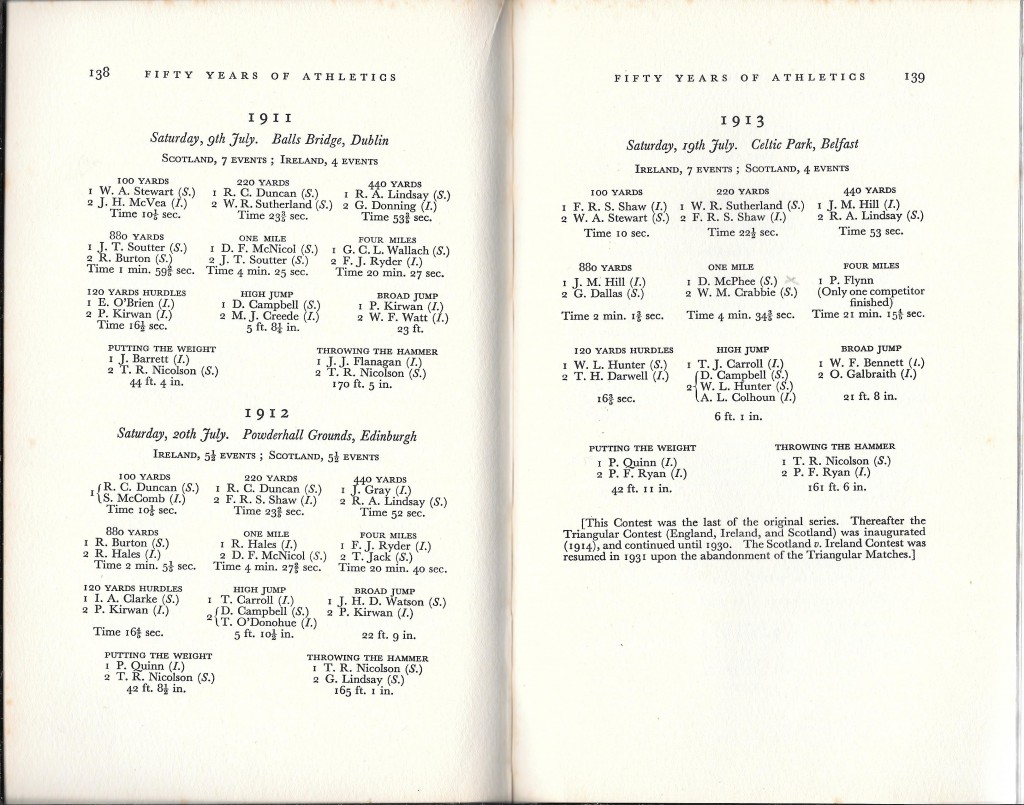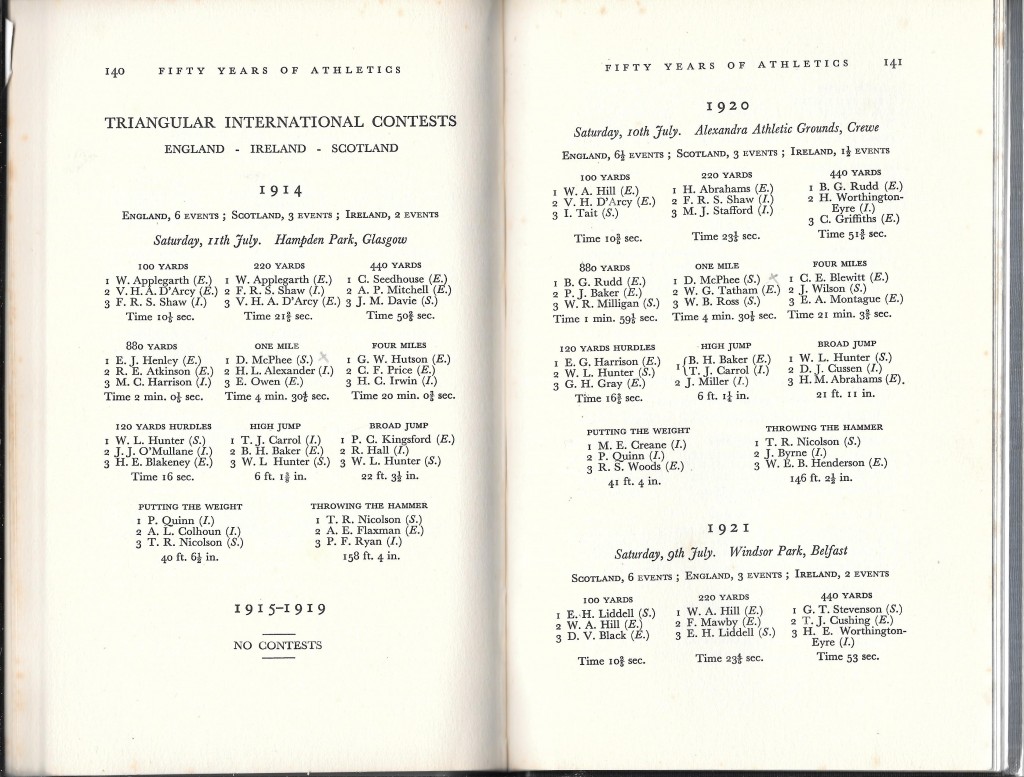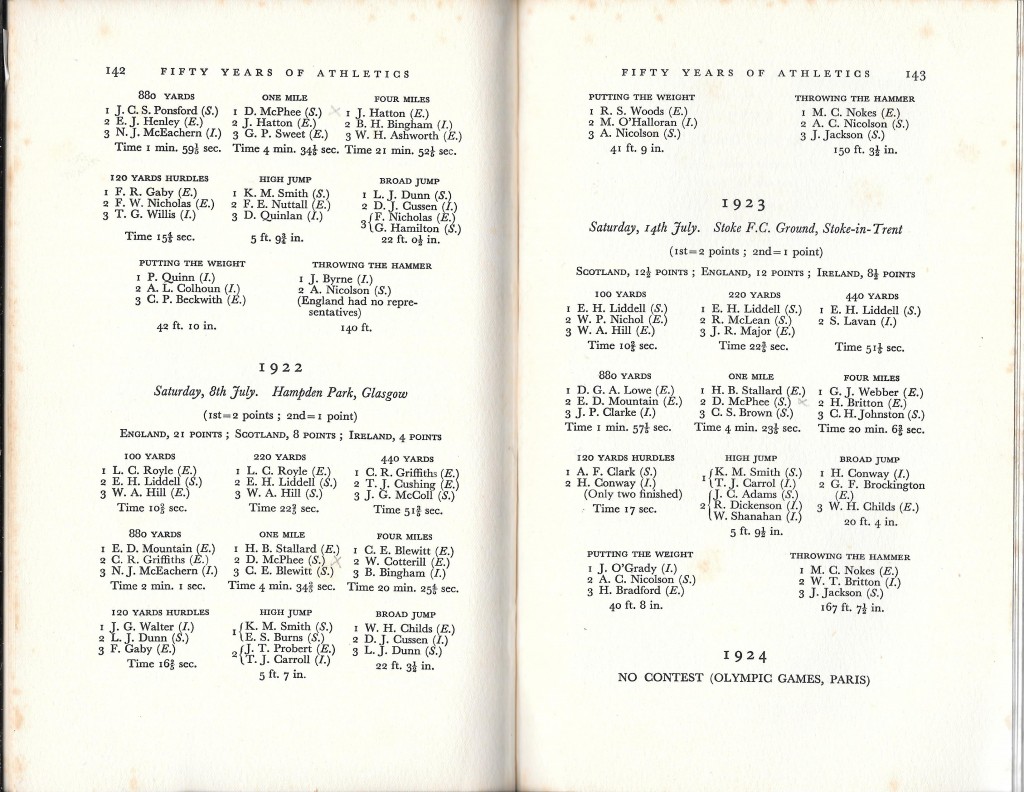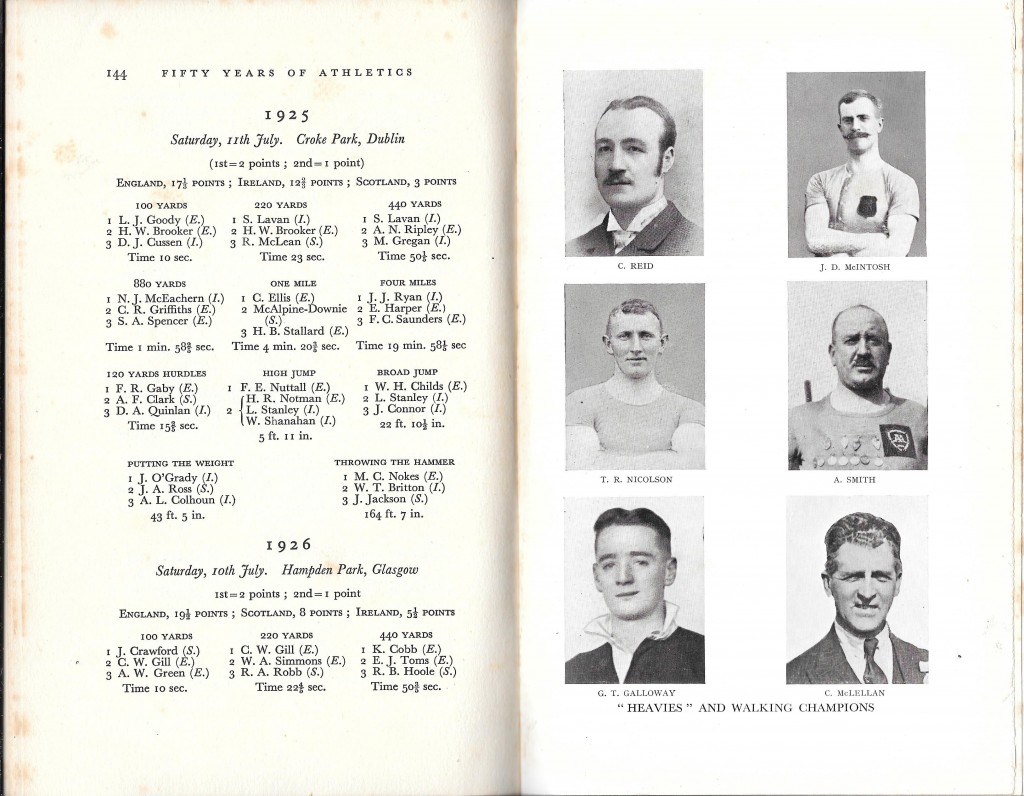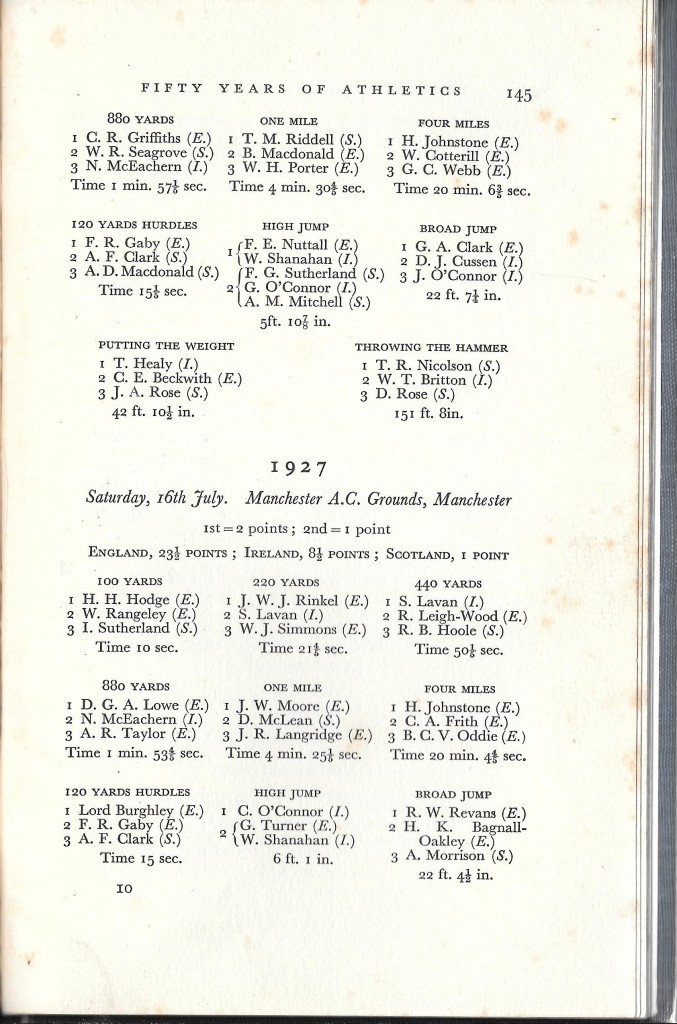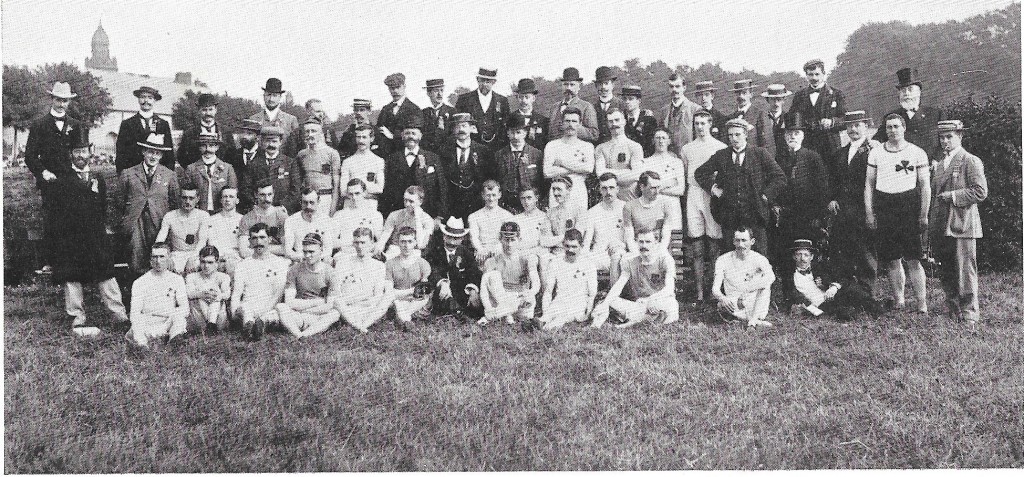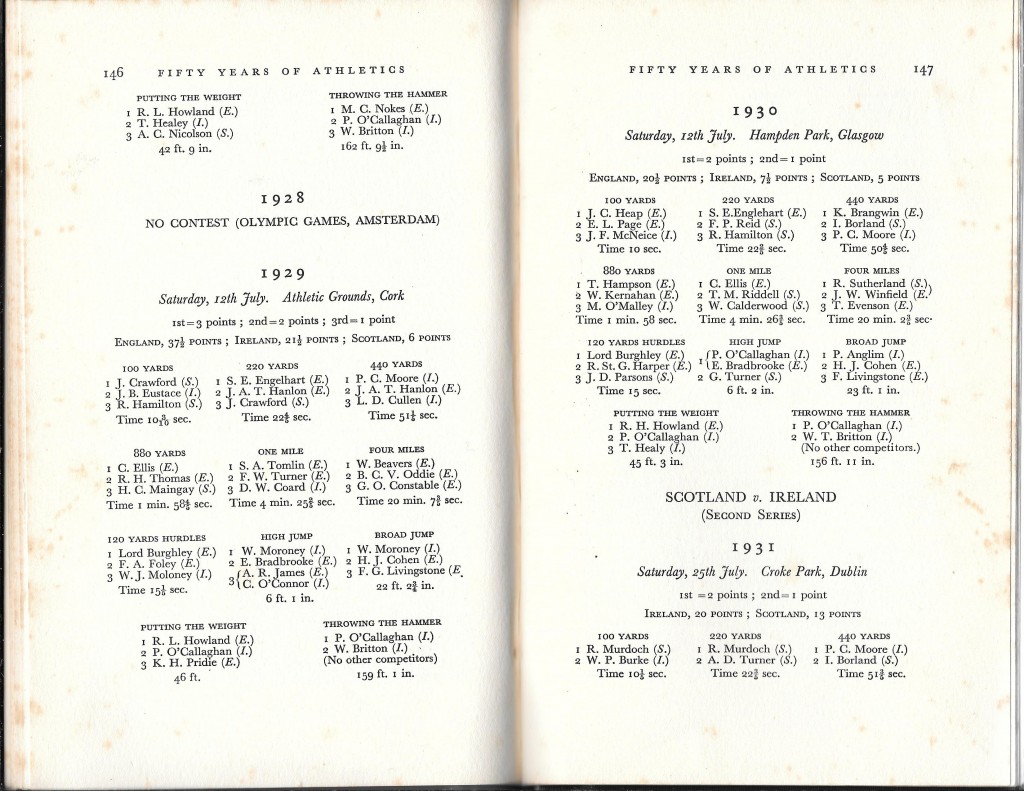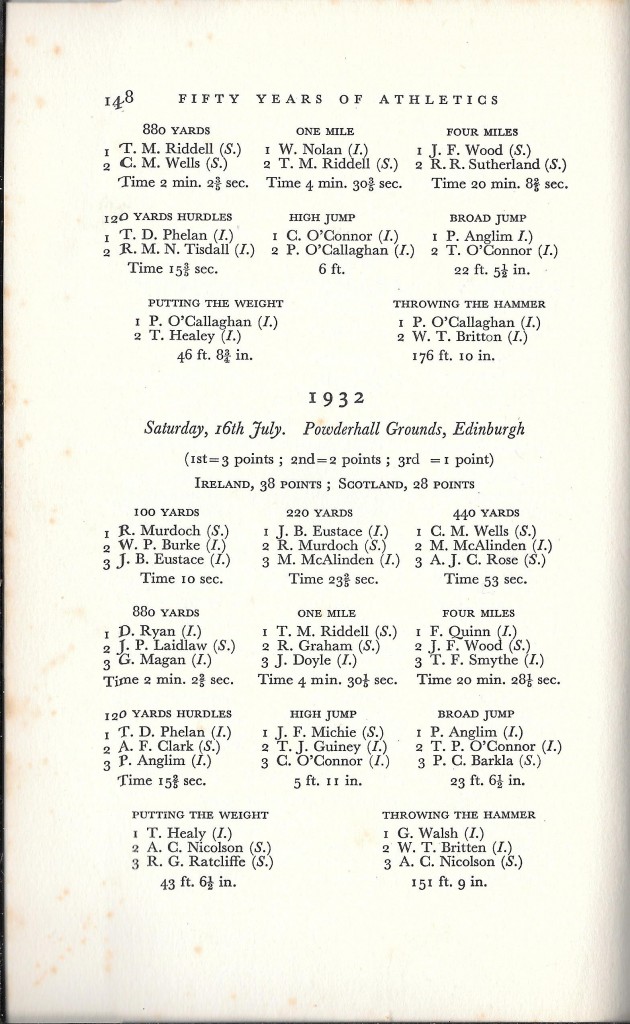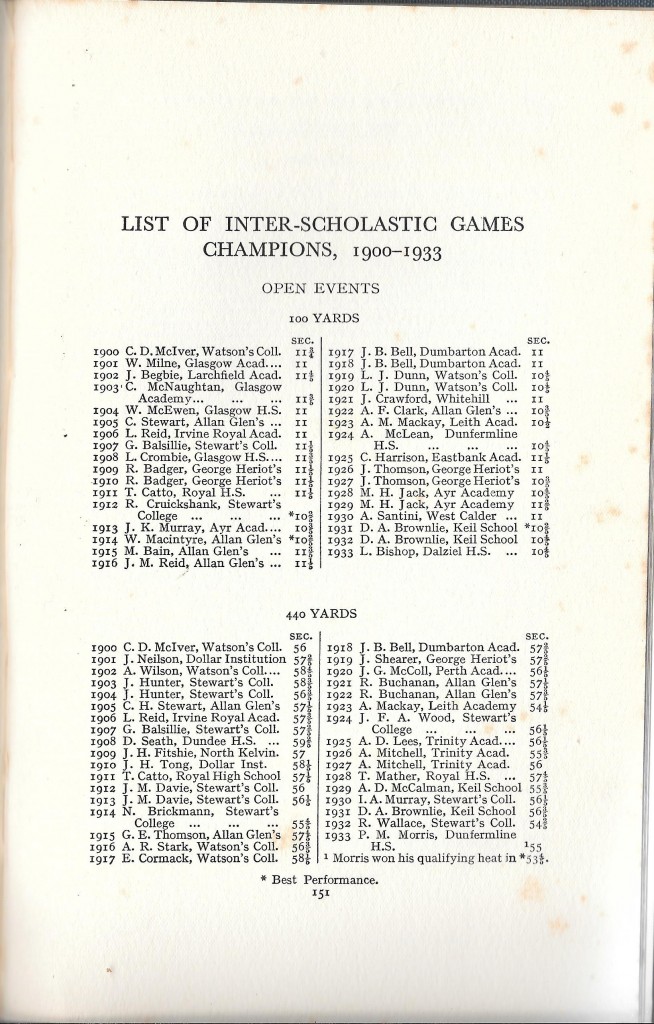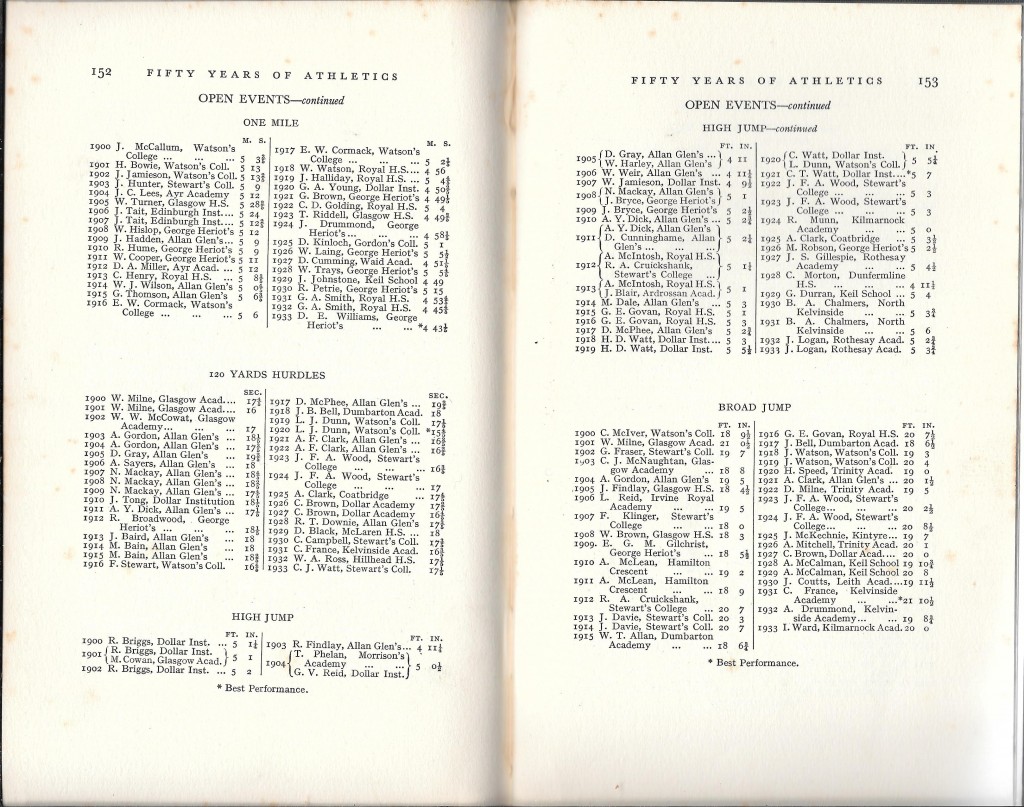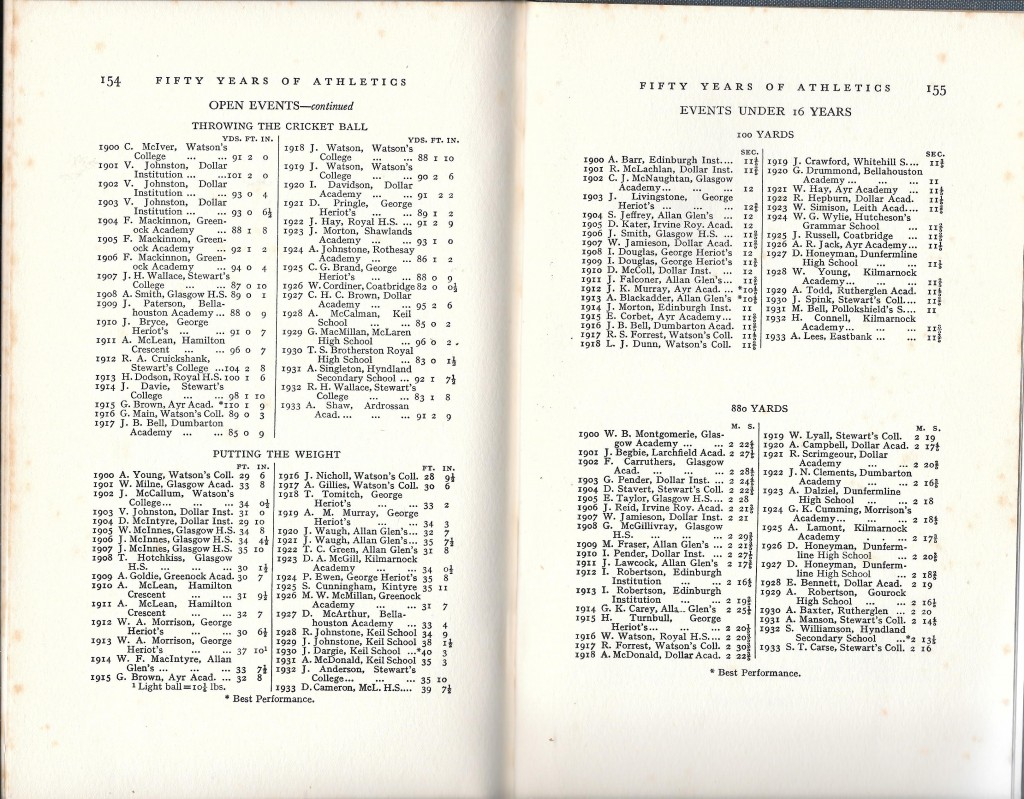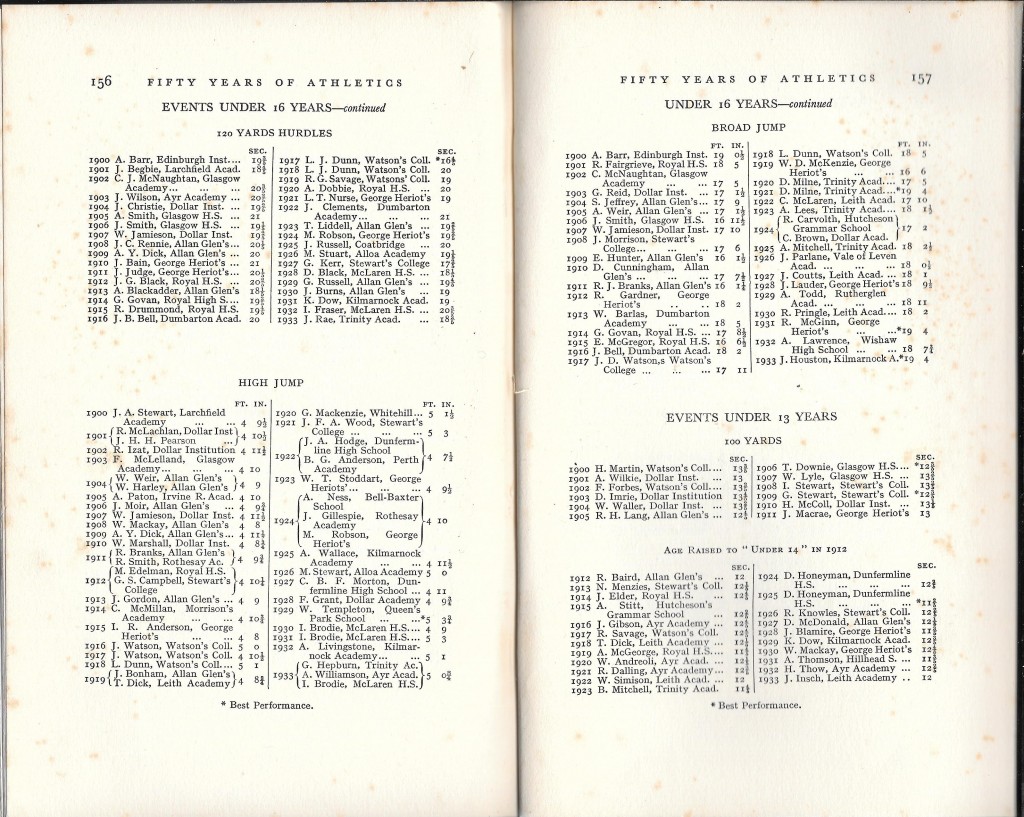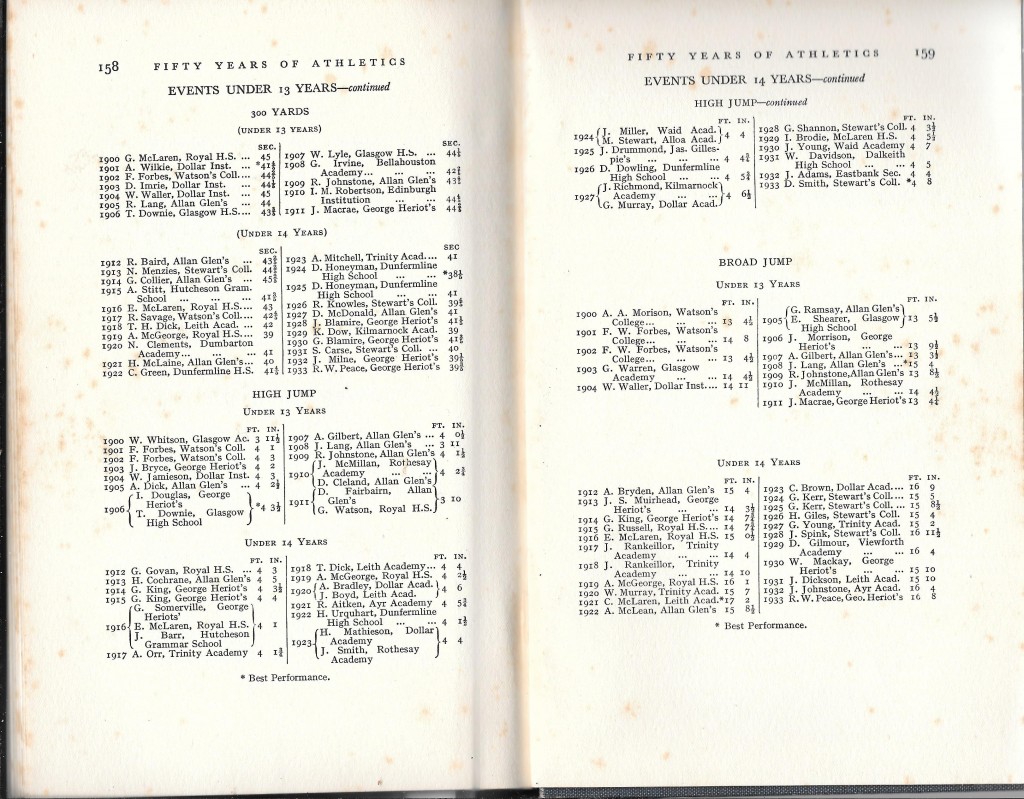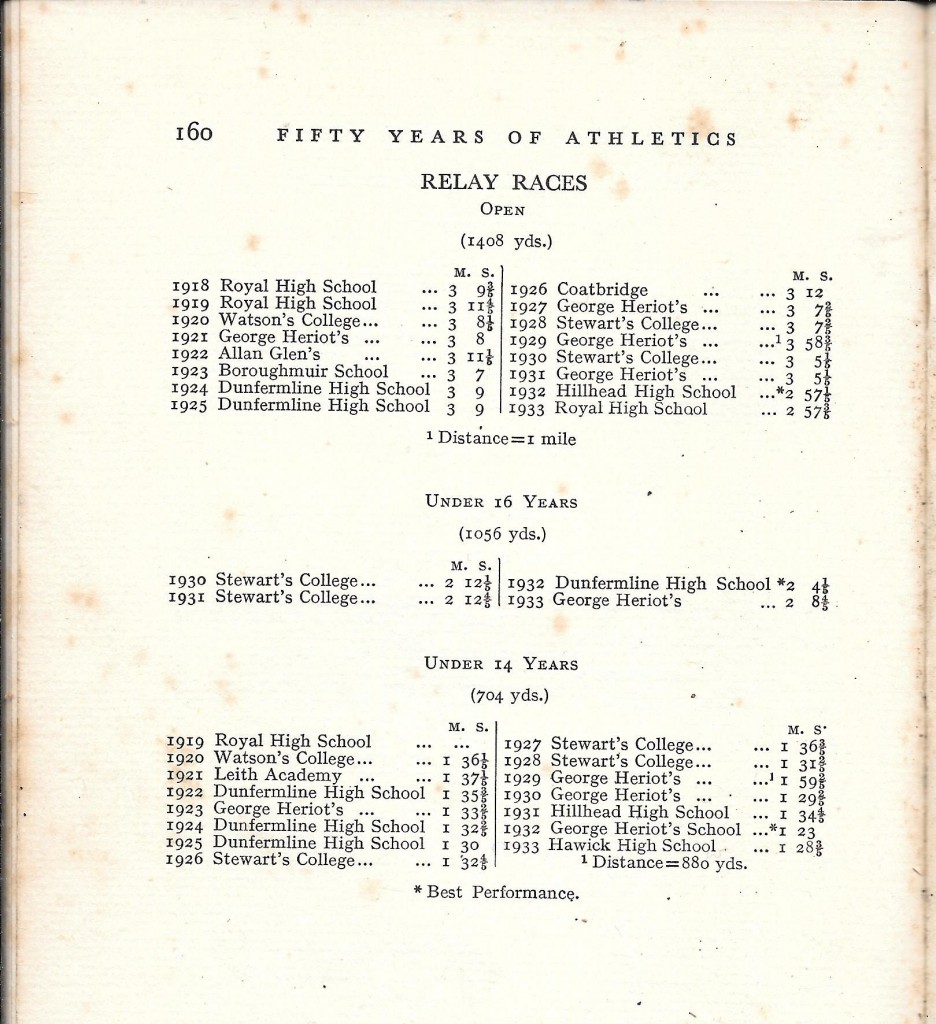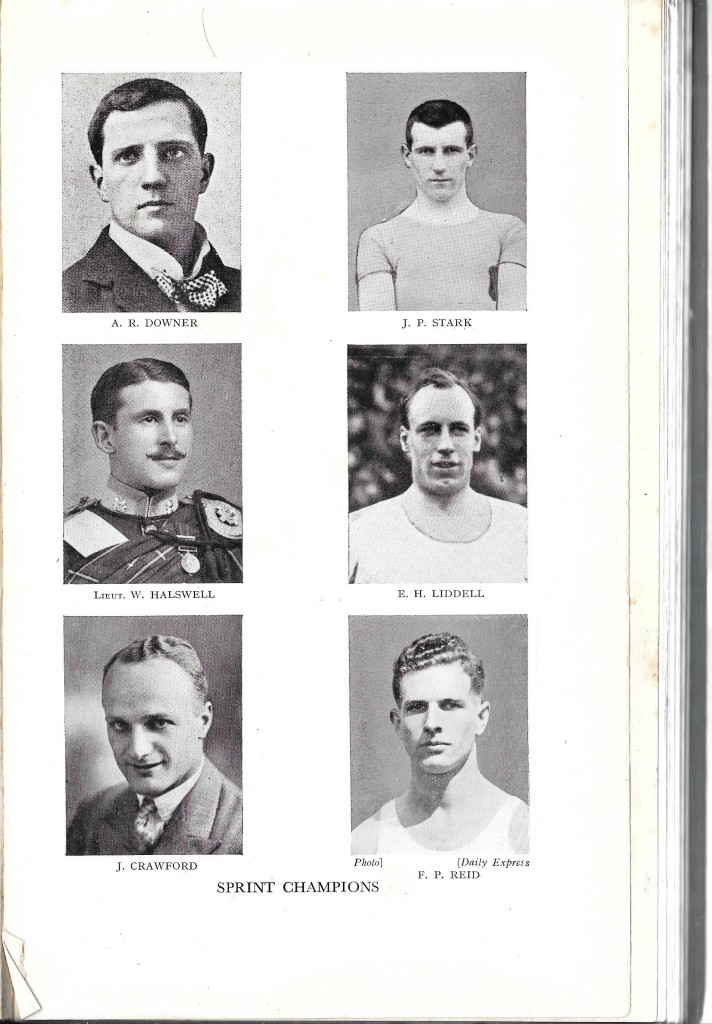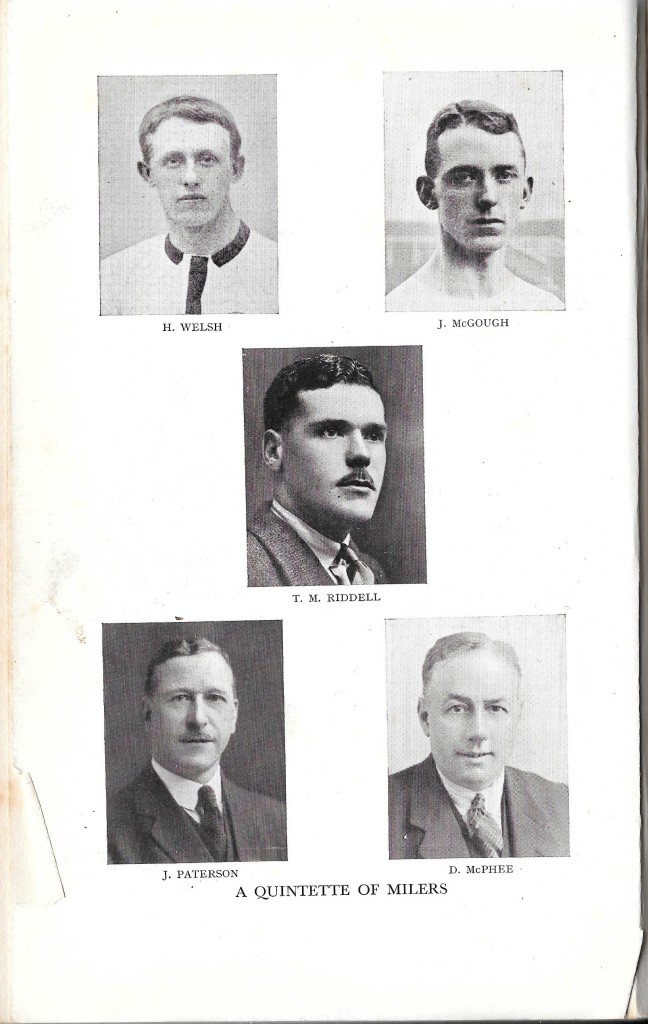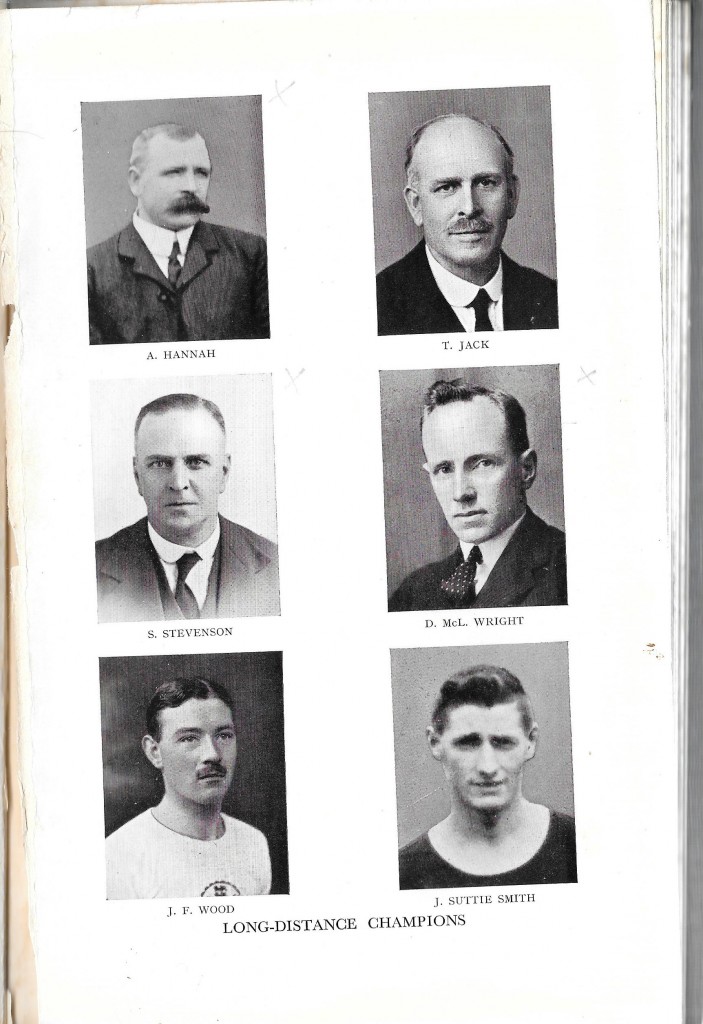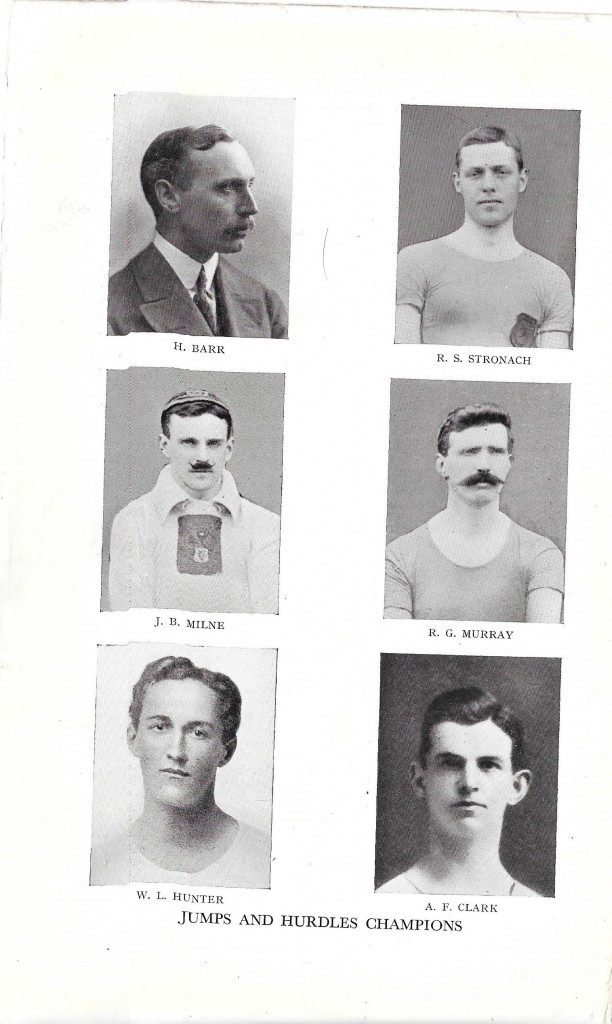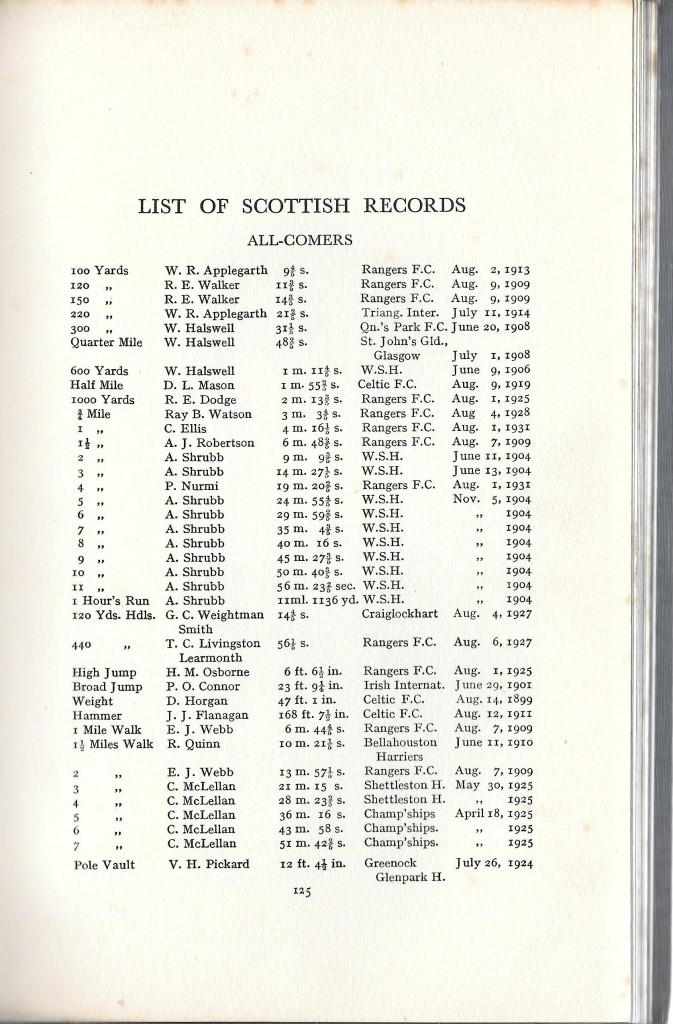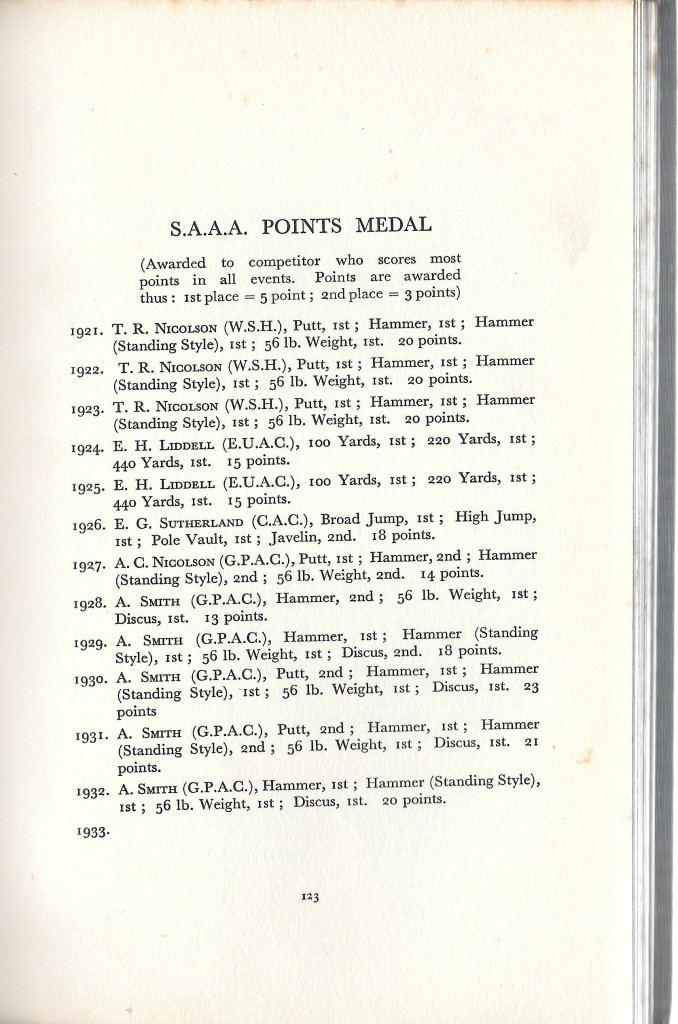West of Scotland Harriers will be represented in the relay race at Leith on Saturday, and the team will probably be JH Douglas, WS Stewart, jnr, AB Kerr and WB Unkles. Maryhill Harriers will hold a confined meeting at Ibrox Park on Wednesday evening, and as the membership is particularly rich in pedestrian talent, ranging from George Hamilton in the sprints to J McFarlane in the mile, the sport should be highly interesting. There will be either three or four flat races, and a high jump. All handicaps.
*
After breaking quarter mile record at New Brighton on Bank Holiday, Van Johnston whose riding on Saturday was one of the glowing features of the Celtic FC Sports returned to his home in Birmingham, and there won three Midland championships – quarter, Mile and Five Mile – on Tuesday. He had practically no opposition, the other cracks being engaged elsewhere. Johnston has had an extraordinary run of success this season, and the fact that he has been in the forefront of British riders for so long is proof of the assiduity with which he train sand the care with which he nourishes his form.
*
With regard to the Olympic Games in Berlin in 1916, it has been decided that there shall be a congress in Paris of all the Olympic committees in 1914to consider such questions as the desirability of a common programme and Standard regulations including the limitation of entries. Questions regarding the organisation and management of the Games will be discussed, and a proposal in favour of a considerable reduction in the number of entries will come from Britain. The question of judging will also ne dealt with at the Paris congress, and it will be decided whether an international panel of judges will be drawn up, from whom alone the country in which the sports are held will be entitled to select the judges for the various events.
*
That of the Ardrossan Athletic Club is the only “seaside” meeting in the West of Scotland. With the passion for amusement that is now everywhere a characteristic of coast life, we are surprised that there are not more athletic meetings at watering resorts on the Clyde. The Ardrossan meeting is gaining in popularity every year, and there is no reason why it should not in time become a rival to the great Glasgow Fair functions at Ayr. The present committee have that ideal before them, and that they are fast realising it is the opinion of all who have followed the stages of progress which have marked the Ardrossan meeting. For Saturday first, the entries are large and as this is practically the last meeting of the season the runners may be expected to display all their powers.
*
One of the features of the Rangers supplementary sports, was the brilliant running of HJ Christie, West of Scotland Harriers, in the 300 yards handicap. He won his heat in 32 2-5th sec and the final in 32 1-5th sec – both excellent performances, considering that he was not pushed in either race. As a matter of fact he palpably slowed in the last 30 yards of the final, and even at that beat his club companion Stewart by a yard. Christie, owing to a slight accident, opened the season inauspiciously, but since the beginning of July he has figured weekly in the prize-list, except at Kilbirnie, where he only finished fourth in the final of the 100 yards. In all he has won four firsts, three seconds and two fourths, which is a splendid return for his exertions.
*
Irish runners have been playing “skittles” with a number of handicaps lately. Little more than a trot enabled J Wickham (Donore Harriers) to win the Rangers FC 100 yards handicap, but in this case there was something so obviously wrong with the “form” that the SAAA decided to make some enquiries. At the Royton Sports on Bank Holiday, J Baird, East Antrim Harriers (7 yards), and I McCormich Queen’s University AC (8 1/2 yards) were first and second in 10 sec; and at Stoke on Tuesday, S McComb, Queens University AC (3 yards) and J Baird with a handicap reduced from 7 yards to 4, were first and third in the 100 yards in 10 1-5th sec, while at the same meeting WR McComish Cliftonville AC (10 1/4 yards) captured the 120 yards handicap in 11 4-5th sec. In 1900 McComish was Booth Hall Plate winner and in the light of that fact, 10 1/4 yards is a very generous concession. Irish handicapping is undergoing a very severe test at the moment not only in Scotland but in England as well, and unless the International Board takes the matter in hand we shall be treated one of these days to a repeat of the Ibrox incident.
*
Those who won prizes at Hampden Park on Thursday night are the possessors of plate which from an artistic and value point of view is far ahead of anything that has been put up for competition this season, and possibly those who attempted to boycott the meeting are now sorry they lent themselves to such unsportsmanlike conduct. The Queen’s have always given prizes that are worth running for and this characteristic was more than maintained on Thursday night. JM Taylor, West of Scotland Harriers, 9 1/2 yards, won the 100 yards by inches from R Raeburn, winner of the Kilbirnie sprint; while RC Duncan was third. WA Stewart, the Scottish champion won his heat, which was composed wholly of novices; but in the semi-final he was caught napping, for which it is just possible the easy win in the first heat was to blame. Anyhow, the final lost something of its interest by his defeat, while at the same time it deprived many of an opportunity of balancing the respective merits of the past and present holders of the sprint championship. The half-mile racing was the finest we have seen anywhere this season. There were three heats, all of which produced remarkable finishes, while the final was as close a race as the 100 yards. George Dallas, Maryhill Harriers 15 yards, was the winner and his time was 2 min 1 sec. He just beat F Thomson, Paisley Junior Harriers 60 yards, by inches and JS Matthews, West of Scotland Harriers 50 yards, who was leading 20 yards from home was third. In other words, the virtual scratch man just beat the limit man, and it is not often this is witnessed in a distance handicap. R Hales, the Irish champion was a spectator and he expressed himself greatly delighted with the racing.
*
The Celtic FC are holding a supplementary meeting tomorrow night. It is with a view to providing a treat to those who participate in the shop-keepers half-holiday that Celtic are extending their sports over tomorrow, and no doubt many will find their way to Parkhead, and will be amply repaid for doing so, Mr Maley has persuaded the American runners to wait over for this meeting. Meredith and Sheppard will will run in the 1000 yards handicap. The former may not feel at home over this distance but Sheppard, to whom any distance from a quarter to a mile seems to come quite freely, will perhaps do a big performance. The all-comers time is well within his powers, and if there is to be any record smashing it should be over this distance. Those in the handicap, anyhow, will pull him out and records can only be made with the help of others. A two miles handicap will figure in the programme with R Hales, the Irish champion, scratch. Hales, it appears has been specially training over two miles. He requested the Rangers to put up a race at this distance which they did but he did not appear at Ibrox. Over 20 runners have been invited by the Celtic to take part in this handicap. Then Meredith, Sheppard, and perhaps Braun, are to have a quarter mile for their special delectation. All are great runners over the 440, and it is said they are going to make an attempt to lower Lieutenant Halswell’s record of 48 2-5th sec. That will take some shifting, as the saying goes. Lippencott will appear in the 100 yards and possibly he may give us a glimpse of the pace he disclosed in Stockholm. His two appearances over 100 yards have been a little disappointing, but there is always hope where there is life, so there is always a chance of a sprinter so talented as Lippencott doing something big.
*
